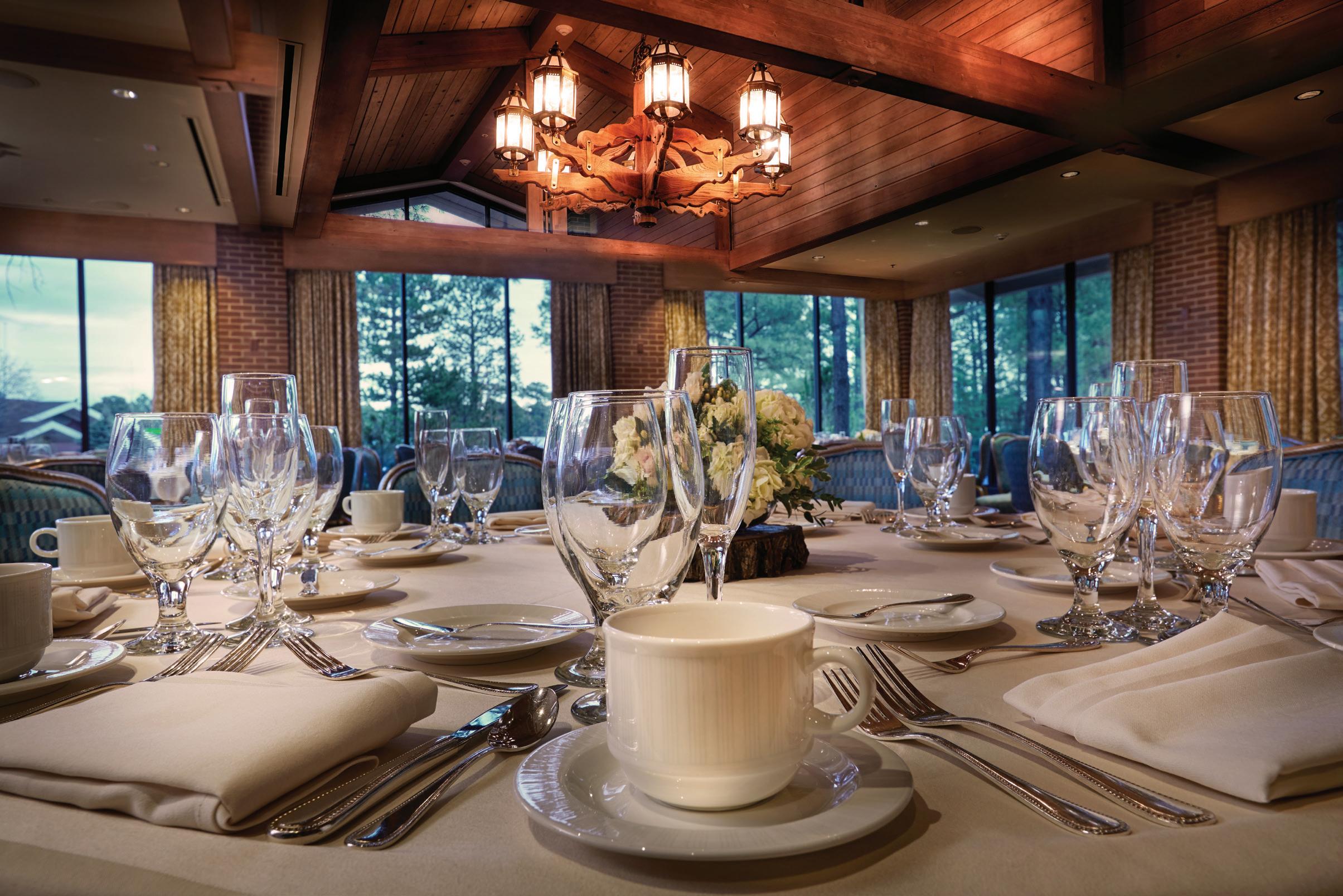INSIDE THE OCTOBER 2022 ISSUE:
Navajo Power Accelerating with Apple p. 3
Health Village to Change Health Care p. 8
Tool Supplier Embraces Family Craft p. 10

INSIDE THE OCTOBER 2022 ISSUE:
Navajo Power Accelerating with Apple p. 3
Health Village to Change Health Care p. 8
Tool Supplier Embraces Family Craft p. 10
On Tuesday, Nov. 8, Coconino County voters will be asked whether to extend the existing half-cent Jail District Excise Tax. The Jail Tax is collected on the same taxable purchases – goods and services includ ing lodging and restaurant charges – as
the Arizona state sales tax.
The half-cent Jail Tax, which has been in effect since July 1, 2007, funds most of the operational costs of the Coconino County Jail and in-jail pro grams that:
N Treat mental health conditions and substance abuse;
N Teach job and life skills; and

N Promote well-being through reli gious, cultural and spiritual practices.
Today, the Jail Tax covers 86% of jail operational costs and funds in-custody programs like EXODUS, a substance abuse recovery program. Since 2007, when the county initiated EXODUS, the Coconino County Sheriff’s office reports:
N A decrease in the impact of sub
stance abuse-related crimes on county communities;
N An overall reduction in the jail population; and
N A decline in the number of people returning to jail.
Further, Coconino County re cidivism rates for EXODUS partici pants have decreased to 25% to 30%.
Continued on page 43
Julie Pendergast walks through the scenic beauty of Happy Jack enjoying the stately old growth ponderosa pines, gnarly oak trees and an abundance of wildlife like red tail hawks, hummingbirds, deer, elk and squir rels. As the manager of Happy Jack Lodge & RV, located on Lake Mary Road halfway between Mormon Lake and Clints Well, Pendergast calls out to recreationists by name and asks about their spouses and grandchildren.
“People love it here,” she said. “Many store their RVs and enjoy the cool pines during the summer.”
Happy Jack Lodge has become its own enclave in the woods, privately owned acreage with a massive rustic lodge, steakhouse, grocery store, gift shop, cabins and RV sites.
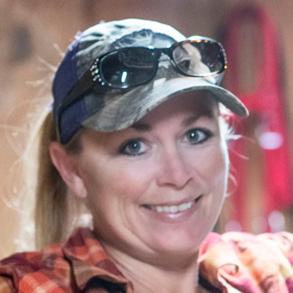

Community Profile: Meet Hitchin’ Post Owner Angel Heckethorn p. 12
Purina Helping People, Pets in Crisis p. 16
Conservation Action Delivers Eagle Twins p. 38


Apple, the company known for iPhones and Macs, has just introduced its 2022 Impact Accelerator (AIA) program that will provide instructional classes to 16 Black, Hispanic/Latinx and indigenous-owned busi nesses that are helping to speed the transition to a green economy.
The new class will include Navajo Power, a renewable energy company in Flagstaff, rep resented by Brett Isaac, a co-founder and the executive chairman of the company.
Navajo Power is a majority Native-owned public benefit corporation that develops utility-scale energy projects with a focus on providing cultural and economic empower ment to tribal nations.

Launched last year, the Impact Accelerator class has the goal of ensuring Apple’s strategic work and investments to protect the environ ment and expand access to opportunities for communities of color.
“We’re excited, because it’s a very competi tive process,” Isaac said. “Apple is very selective over the companies that they choose to support and, being indigenous, these opportunities are very rare instances. So, having the support of a global brand like Apple is really acknowledg ing the amount of work that our team has put into prepping our company going forward, and really is a statement to the quality and the intentions of the company to achieve its mission.”
The AIA program is a virtual program that provides its selected cohort members access to participate within Apple’s corporate network through a series of workshops and men tor-guided sessions, he explained.
Isaac said he will be leading Navajo Power’s
participation, along with Clara Pratt, the director of government relations, and Adelita Barrett, director of project finance.
“Apple really believes in providing this access of knowledge and information to key decision makers within the company,” Isaac added.
Participating businesses, hand-selected by Apple because they share the goal of creating a greener world, go through a three-month pro gram that provides training and mentorship as part of Apple’s Racial Equity and Justice Initia tive and to further its climate change goals.
Other members of the class include compa nies from across the country, including Cali fornia, Georgia, Hawaii and Texas, that work toward a variety of goals such as recycling in novation, carbon reduction, e-waste recycling, monitoring of water pollution, maximization of soil health and introduction of eco-friendly materials into construction.
“Following the program, the companies will be considered for business opportunities with Apple as it works to achieve carbon neutrality across its entire manufacturing supply chain by 2030,” according to an Aug. 25 Apple news room article. “Apple has been carbon neutral for its corporate operations since 2020.”
A mission-driven company, Navajo Power officials say they develop projects designed to build strong and credible relationships with communities, to unveil access to clean energy for First Nations.

“Really, our activities are focused on helping to regenerate communities affected by the transition in terms of like coal closures and the transition away from fossil fuels,” Isaac said.
“These communities themselves are some of the most vulnerable, even without the transi
Spurred by the passage of the $280 billion bipartisan bill to boost domestic investment and expansion of high-tech manufactur ing and production, executives at Pure Wafer, a Prescott-based leader in silicon wafer, thin film deposition and wafer reclaim services, have an nounced plans for further expansion.
Ardy Sidhwa, Ph.D., Pure Wafer vice president of operations, in exclu sive comments to Flagstaff Business News, said the company is making a multimillion-dollar investment in finding better, more efficient and faster ways to keep up with increasing national and international demands. The 50,000-square-foot plant, located at 2575 Melville Road on the east side of Prescott Regional Airport, has been producing wafers and reclaimed wafers for microchip industries since 1998. Yet, many local residents are unaware of the company’s operation, even with rapid expansion.
Sidhwa and Pure Wafer CEO S. Mark Borowicz are excited about the opportunities now opening because of the growing semiconductor renais sance in Arizona.

Sidhwa cited the CHIPS and Sci ence Acts of 2022, signed on Aug. 9,
which is expected to add manufactur ing jobs and allow American manu facturing, supply chains and research and development throughout the U.S. to add $50 billion in investments to American semiconductor manufac turing.
Further, the CHIPS Act legislation is expected to drive down chip costs further and should lower the costs for products in which chips and wafers are used.
Sidhwa emphasized that chips and semiconductors are “the tiny brains found in all sorts of contemporary products, ranging from computers and automobiles to household appli ances and weapons systems.”
Sidhwa was even more enthusiastic about Pure Wafer’s growing business in life sciences, photonics and mi cro-electromagnetic systems when it acquired NOEL Technologies. It is a Silicon Valley foundry that serves as a developer of innovative semicon ductor and biochips. The company fills the innovation gap, often serving as an extension of research and development.
He said, “More and more scientists and medical personnel are finding creative applications for microchips and biochips that can be then used to help people find remedies and tackle
diseases that ultimately improve quality of life. Use of semiconductor technology applications through artificial intelligence applications are astounding. We’re generations ahead of where we were 10 years ago.”
He stressed that what’s really sig nificant is that such applications are now more approved at the interna tional level.
“What we want to do in Prescott is to expand our production, even

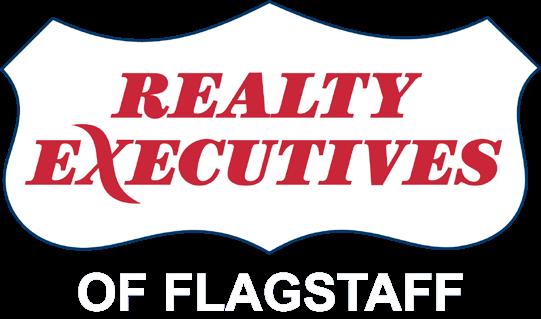
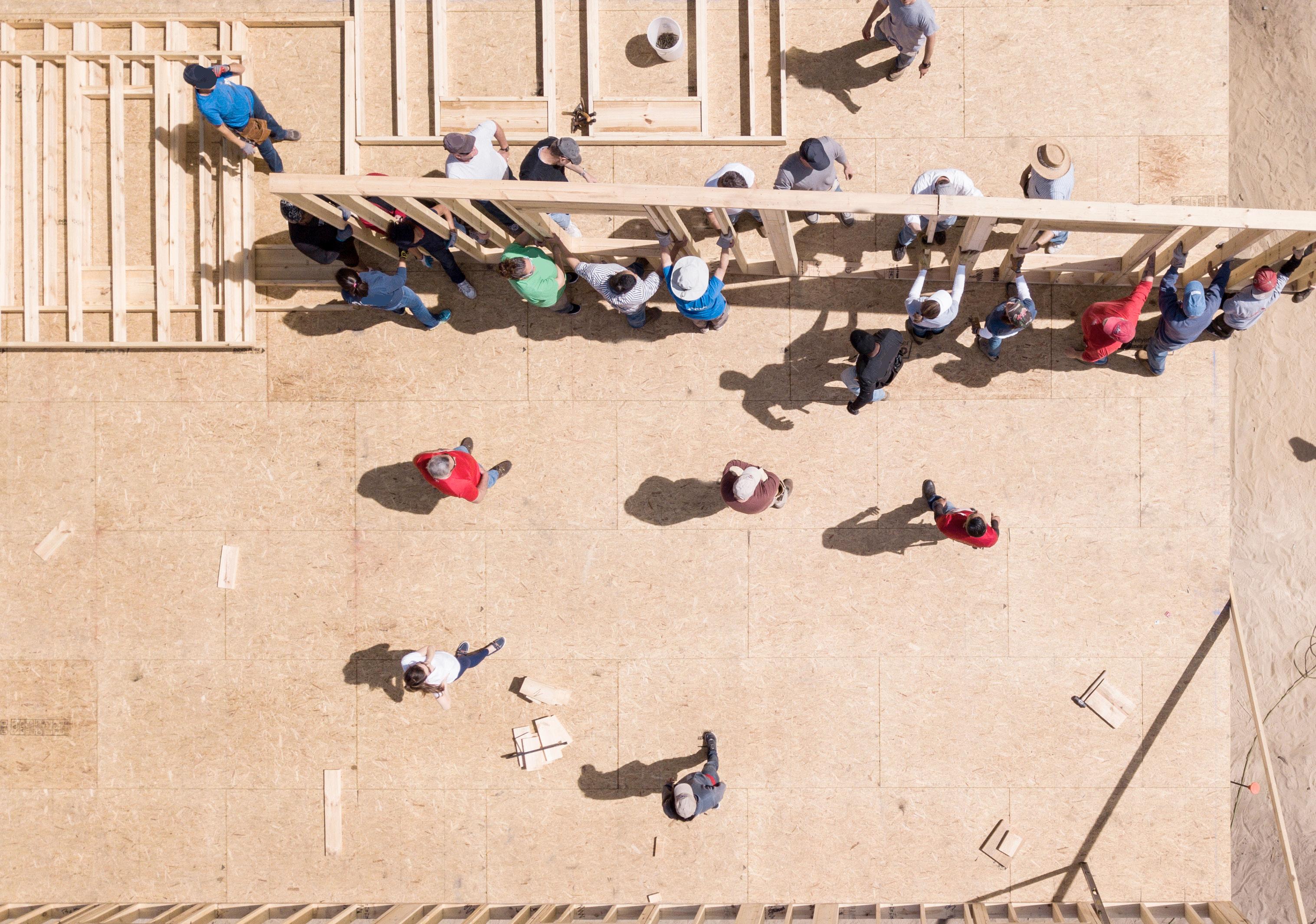
as much as 20 to 40%. At the same time, we’re improving efficiency of production of what we are manufac turing, For instance, we’ve become more efficient in use of water. Same
Continued on page 42







 By Betsey Bruner, FBN
By Betsey Bruner, FBN
Julie Morrison’s memoir, “Barbed,” will turn one year old in November.
The fourth-generation Arizo nan shares her narrative about what happens when you take a leap into the unknown but still land in the saddle. It relates to how Morrison and her husband moved to Flagstaff in March of 2011 to try to help her parents make their Northern Arizona ranch profitable.

While fighting for its future, she simultaneously sought to salvage her marriage and rediscover her best self.
The events in “Barbed” take place between 2011 and 2014. The author originally wrote the book as a personal project, not intending for it to become public, believing that only memoirs of famous people get published.
Eventually, she decided to heed the wise words of well-known author Sherman Alexie, who told an audience she was part of years prior, “You had an epic day today. You have stories to tell.”
The memoir recounts the barbs of ranching and relationships set in the rock-strewn landscape of her fami
ly-owned horse and cattle business. “Barbed refers to the barbed wire that is ubiquitous to ranching, as it is compar atively cheap, hardy and effective fenc ing material,” Morrison said. “Much of my experience ranching also had to do with some form of negotiating boundaries, either physical or relational – harrowing either way – making the name feel actually and metaphorically appropriate.”
Morrison said she wrote the events of “Barbed” after leaving the ranch in 2014. She rewrote most of the book in
Peripheral neuropathy is a condition that involves damage to the nerves in your feet. Symptoms include muscle cramping, difficulty walking, burning, tingling, numbness, and pain. In many cases, it’s caused by diabetes, but poor circulation can also cause these symptoms or make them worse.
Poor circulation or PAD (peripheral artery disease) is caused by the buildup of fatty material inside the arteries, limiting the amount of blood that passes through them. “If an artery is blocked, oxygen and nutrients can’t get to your nerves and muscles, so they cry out for help,” explains Dr. Diana Perry, of CiC Foot & Ankle. “Cramping, burning, numbness, or sores that won’t heal are telltale signs.”
The good news is specialists are able to treat PAD with a minimally invasive procedure in an office setting. Using x-ray imaging, Dr. Joel Rainwater, an interventional radiologist at Comprehensive Integrated Care, is able to go into the bloodstream through a tiny nick in the skin to see if there is any plaque buildup.
“We’re able to see if there is a blockage and then remove it with special instruments,” explains Dr. Rainwater. “Once the plaque is removed, blood flow improves.” Patients are home within hours and back to everyday activities with almost no downtime.

If you’re just realizing that you may be suffering from neuropathy or poor circulation, make an appointment to see a doctor. Or, if you’re not finding relief from medication or treatment, a second opinion may be helpful to determine the cause of the tingling, cramping, pain, or numbness in your feet.
Dr. Perry and Dr. Rainwater can be reached at 928-719-7400.
2019 when she connected with Soul stice Publishing in Flagstaff, a company publishing “books with soul” that told
her they liked memoirs.
The ranch land referred to in her
Peripheral Arterial Disease (PAD) is a leading and preventable cause of death in the U.S.
The Arizona Commerce Authority is helping our state’s manufacturers grow and prosper through meaningful programs like the Arizona Manufacturing Extension Partnership (Arizona MEP). Using a proven approach that combines decades of leadership, manufacturing, operational and business expertise, Arizona MEP offers custom, hands-on solutions to help clients achieve their goals. Whether you’re looking for minor improvements or a major transformation, we provide the right knowledge, skill set and flexibility to support your team. Join the more than 375 manufacturers in Arizona who have chosen Arizona MEP to help enhance their business.

Northern Arizona Healthcare (NAH) is proposing to build a multi-million-dol lar Health and Wellness Village that is expected to shape health care services for Northern Arizona for decades to come and also generate tens of millions of dollars for the local economy.
“The Health and Wellness Village will be un like anything ever built in Arizona,” said Steve Eiss, vice president of real estate and develop ment for Northern Arizona Healthcare. “It will change how people perceive health care delivery while providing a significant economic benefit for Flagstaff.”
The new campus will be built near Fort Tuthill, anchored by a state-of-the-art hospital and ambulatory care center. It also will include community amenities that support Flagstaff’s growing population and needs, including new housing and grocery options. In addition, the campus will include a hotel, dining and outdoor options to benefit NAH patients.
“NAH is working with other developers to create amenities that promote a healthy lifestyle and to serve our community,” Eiss said. “The revenue NAH earned from these development opportunities will be reinvested in patient care, equipment and other health care technologies and innovations.”

Upon full build-out, it is estimated that the Health and Wellness Village will generate an additional $389 million per year in economic benefit for Flagstaff and Northern Arizona above the existing Flagstaff Medical Center. It also is expected to generate $4.5 million in an nual tax revenue for local jurisdictions like the Flagstaff Unified School District and Coconino Community College.
Pending approvals from the City of Flagstaff, the campus will be built in multiple phases beginning with an ambulatory care center ten tatively scheduled to open in 2025 and the new hospital opening in 2027.

Eiss said the campus would not only stim ulate the economy but also act as a catalyst to draw more medical professionals and their fam ilies to Flagstaff as the development will provide more job opportunities.
“By investing in a new hospital and ambula tory care center, NAH will be contributing to Northern Arizona’s long-term economic vitality and growth. We will be providing additional jobs while helping retain health care profession als in the region,” Eiss said.
NAH officials say the new campus will replace the current Flagstaff Medical Center (FMC), which cannot be retrofitted with the latest technologies and innovations needed for a growing community. FMC will be available for redevelopment after the new hospital opens.
Eiss noted that NAH is in discussion with
several local organizations about the redevelop ment of FMC. This includes regular meetings with city officials, business leaders and com munity members who have shared interests in downtown Flagstaff’s success.
The new campus will be the region’s first-ofits-kind concept focused on holistic health and wellness. It would allow NAH to build a space that can integrate medical, surgical, emergency, ambulatory and other health care services all in one location. It will continue to be the only Level 1 Trauma facility in Arizona north of Phoenix.
The new campus will include expanded clinical options such as more comprehensive oncology services, expanded patient therapies and rehabilitation, a wound-healing program with hyperbaric chambers, and outpatient imaging.

“NAH isn’t just proposing a development that will offer more clinical options, but we are designing a new hospital that will provide their patients with an even higher degree of care,” Eiss said.
According to Eiss, one of the most import ant features of the new hospital is the layout of patient rooms, which are intended to improve patients’ comfort during their stay. Patients can expect larger, private, suite-styled rooms with a full bathroom. In addition, each room will have in-room couches for patients and visitors and large windows allowing more natural light into each room. These features are designed to help improve patient experience and well-being.

Patients and their families also will be able to take advantage of the 22-acre natural retreat with trails that will be integrated into Flagstaff’s existing trail system.
“We are excited to bring a campus that will give residents of Northern Arizona high-quality care and amenities dedicated to improving their health for generations to come,” Eiss said.

FBN



Tynkertopia Founder Dr. Alice Christie and Arizona Commu nity Foundation of Flagstaff Regional Philanthropic Advisor

Gwen Groth were among those celebrating local non-profit organiza tions and the generous funding being infused into Flagstaff from ACF and collaborators in August. Along with Tynkertopia, organizations receiving grants included the Flagstaff Dark Skies Coalition, Flagstaff Festival of Science, Flagstaff Community Band, Coconino Community College Nurs ing Program and Catholic Charities of Arizona. “The Arizona Communi ty Foundation of Flagstaff is proud to partner with 10 collaborative donors to provide $1.34 million to our local community,” said Groth. “Together, we provided grants to 87 non-profit organizations in the areas of arts, social services, health, environment and education.”
the Olympics
KATE VAN BUSKIRK (left)
Canadian athlete, internationally accomplished cross-country runner
with Hypo2

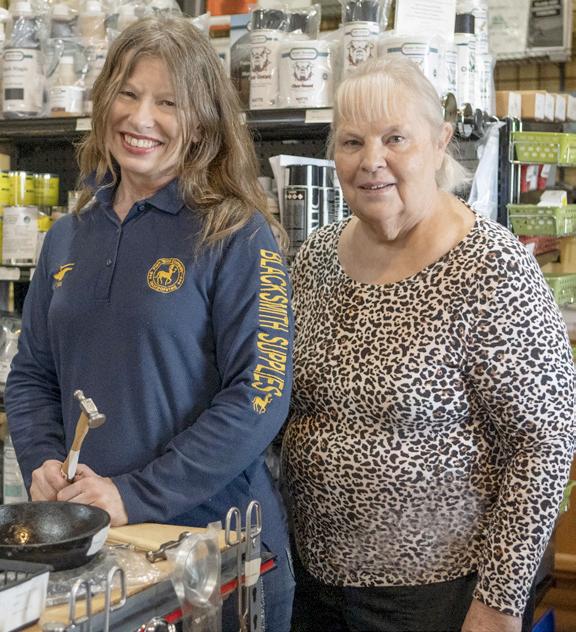 By V. Ronnie Tierney, FBN
By V. Ronnie Tierney, FBN
Missing the collapse of the San Francisco Bay Bridge by sec onds during the 1989 Loma Prieta Earthquake is just a shadow of the blessings, hardships and successes of Pieh Tool Company President Amy Pieh’s remarkable life.
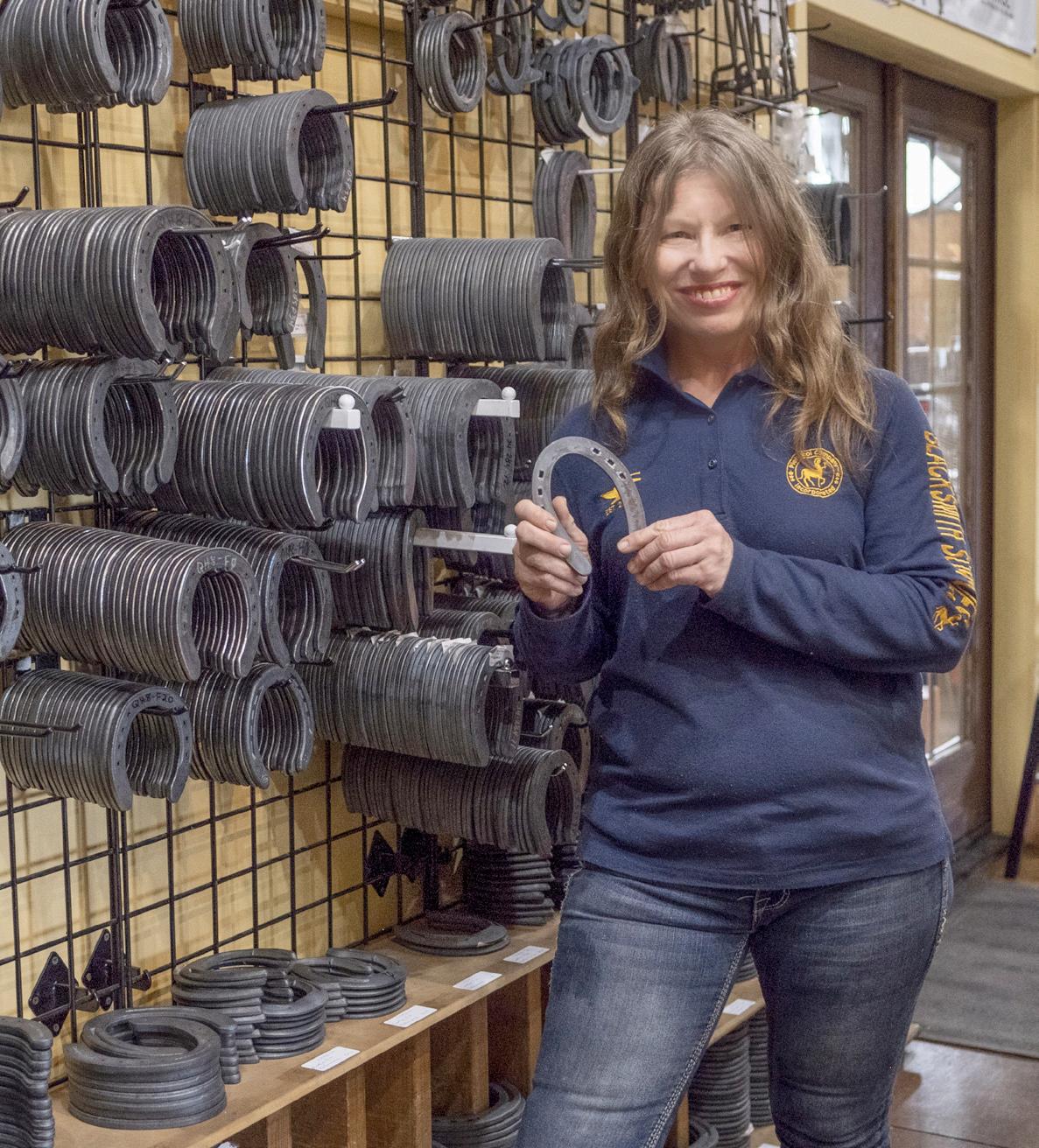

“I was on the top of the Bay Bridge and I didn’t feel anything, but the second I got off, the bridge was swinging,” she said.
Brought up in a maze of tools in Burlington, Wisconsin, Pieh’s parents, Bill and Bonnie, owned an internationally known tool company, Centaur Forge, that served black smiths and farriers all around the world since 1960. “When my dad died in 2000, it was such a loss to the industry. People came from all over; it was amazing.” Amy lost her mother 18 months later.
Caring about others was the No. 1 priority for her parents, says Pieh, and through the business, they made a lot of friends. “Their goal was to provide a vast selection of products for the best value,” she said.
Joining the U.S. Air Force after high school, Pieh landed in the San Francisco Bay area. “I couldn’t fly due to a depth perception issue, so I became a metallurgical inspector. In this assignment, I did non-destructive inspection, where I inspected every part of aircrafts, all the way down to the oil. After separating from the military, I continued as an inspec tor in aerospace and gravitated to inspection at power plants, nuclear and fossil fuel.”
For a short period, Pieh returned to Wisconsin to help her mother with the business. “I realized there was more to my returning home than just helping out. I was preparing to carry on a 40-year family [business] tradi tion.” Blacksmithing itself is a 61-year Pieh family tradition.
A visit to Sedona clarified her future. “I was coming into the Village of Oak Creek and just around the
first bend by Bell Rock, a vision of my mom and her wonderful smiling eyes came about and I could hear her voice saying, ‘Do it right here.’ So I got an [real estate] agent and found a building in Camp Verde.”
Seeking help from the Small Business Administration mentoring program, Service Corps of Retired Executives (SCORE), Pieh was able to move forward. “They were a great help developing my business plan and gave me direction to continue my parent’s legacy.”
On May 17, 2003, she says people came from near and far to attend her grand opening, a big event that she hosted five months into her preg nancy.
Down the line, hardship ensued and Pieh almost lost the business, but as a single mother, managed to pull through. “The towns of Camp Verde and Cottonwood embraced me and helped me and my son, William.”
Along with her main office in Camp Verde, Pieh has another retail location in Cave Creek and a third tool mail order business in Anthem.
“I met Amy in Wisconsin through my daughter, Sara, who was also in the Air Force,” said Pieh Tool Com pany Graphic Designer and close friend, Ann Jackson, who works at the Camp Verde shop. “Amy is one of the most incredible women I’ve ever known and to do what she has done is incredible. She continues to amaze me!”
A walk inside Pieh Tool Company in Camp Verde is a well-stocked and immaculate menagerie of black smithing and farrier tools, a full wall of horseshoes, anvils, swage blocks, abrasive tools kits, stands, forges, hammers, art supplies for blacksmiths, patinas and everything from aprons and books to beginner blacksmith kits.
There’s even a line of tools under the Pieh Legacy Collection, in cluding a series of blacksmithing tongs named Billy to honor her late father. “I have my own line of hammers, too, and hoof knives called
Billy and Bonnie, also named after my parents.”
“I love working for Amy,” said new employee, Pieh Tool Company Accounting Manager Jackie Bon ney. “She is a brilliant woman and as a woman and single mother, she has done everything on her own. Some times I have to laugh because it’s such a whirlwind around here, but I have so much admiration for Amy and I can’t believe she’s done so much, especially going through COVID. People don’t
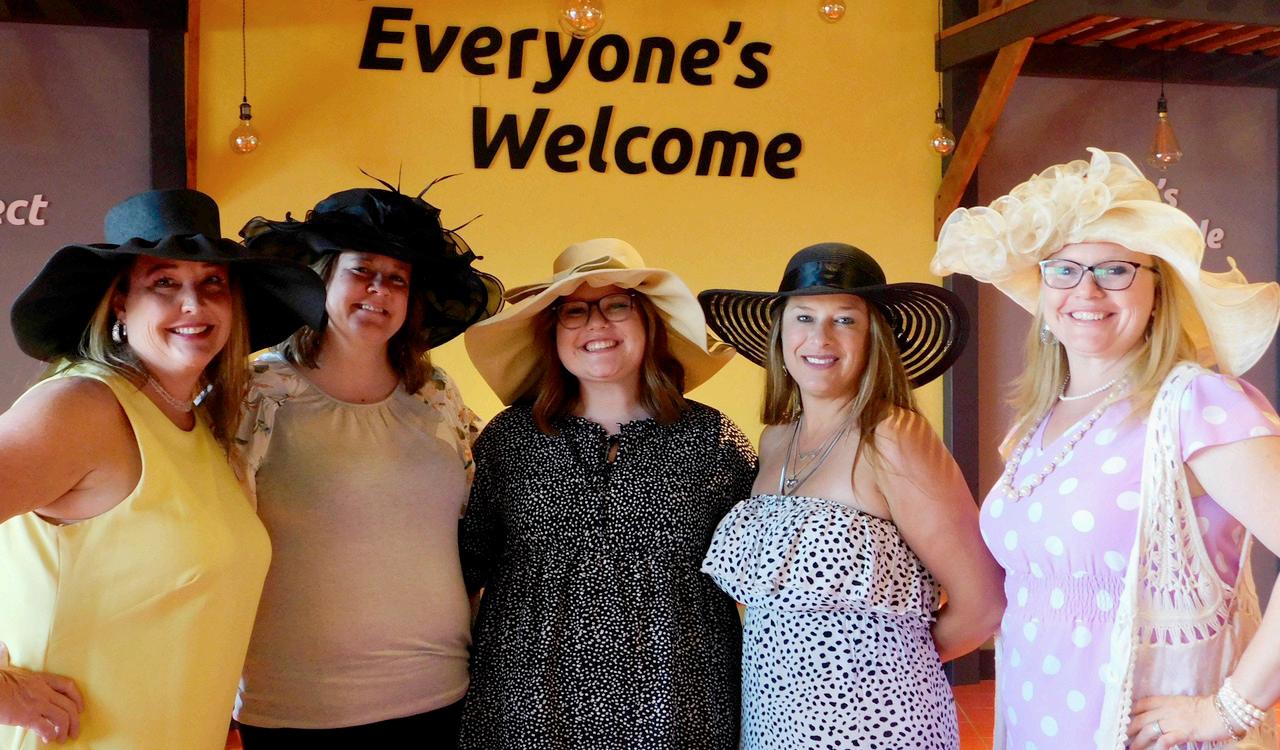 By Bonnie Stevens, FBN
By Bonnie Stevens, FBN
Among a sea of fancy hats and fine china, more than 150 com munity members came out in style to celebrate women in leadership during the third annual Prescott-area ATHENA Awards High Tea, hosted by Quad Cities Business News and Prescott Woman Magazine. With a standing ovation, the crowd honored Northern Arizona Council of Govern ments (NACOG) Regional Director Teri Drew as the 2022 Prescott-Area ATHENA.
In receiving the award, she recog nized the support of her husband and high school sweetheart, Rick Drew, as well as her co-workers.
“The honor of being named the 2022 Athena Award winner has changed my perspective on my career, contributions and commitment to community,” she said. “The award has motivated me to seek out the good in all women and nominate them for this life-changing recognition. It has changed my life
by being able to share more about me – my family, my career – with the community. I’ve received so many emails, calls and congratulations from the community. I’m grateful to share my story.”
The ATHENA Award is part of an international program that began in 1987. Its mission is to support, honor and develop women leaders and inspire women to reach their full potential. It recognizes women who achieve excel lence in their work, support their com munity and mentor others. Astronauts, judges and elite athletes are among the ATHENA circle of sisterhood. Famous ATHENA Award recipients include Billy Jean King, Condoleezza Rice and Marlo Thomas. At the Prescott event on Sunday, Sept. 18, Aboost was the lead sponsor. Founder and owner Anita Farrelly, RN, says she loved being in a room full of women who were pushing themselves to the next level to be role models and leaders for the community.
“I’ve always been an advocate for lead ership, growth and development and to
participate in an event that champions these skills is powerful, enlightening and motivating. It’s what I want my daughters to know and learn.”
Farrelly added that for nurses, the as sumption is that they will always work for someone else, a hospital or a corpo ration. “The Prescott-Area ATHENA
Awards is such a good fit for Aboost because we’re teaching nurses how to be owners of their own businesses, to have an entrepreneur mindset and to develop marketing and sales skills so that they may use their nursing skills to care for the community in a different way.
Through her work with NACOG across more than four decades, Drew has helped numerous job seekers re ceive career-path training and find em ployment. She is credited for NACOG’s local, state and national recognition in innovation, leadership and services. She
Continued on page 40

Vice President, Commercial Banking thannigan@alliancebankofarizona.com
(928) 214-3422
John Fockler
Vice President, Senior Relationship Manager john.fockler@alliancebankofarizona.com (928) 214-3410 alliancebankofarizona.com
One of Forbes’ “America’s Best Banks” Year After Year
Bank of Arizona,

The early days of Flagstaff have not been lost. History is being retained and entertained at the Historic Hitchin’ Post Stables just out side of Flagstaff on Lake Mary Road.
Working every aspect of the busi ness, Historic Hitchin’ Post Stables Op erations Manager Angel Heckethorn is happier than ever. “I get to be around horses and meet people from all over the world.”
The Heckethorn family acquired the property earlier this year and will be of fering the same trail rides as the previous owner. “Our rides are one to three hours through Walnut Canyon, Fay Canyon and Sandy Canyon. The longest ride is about seven miles,” she said.

Roger Hartman owned Historic
The history of Historic Hitchin’ Post Stables draws from Flagstaff’s earlier days when Lake Mary Road was barely two lanes and traffic signals didn’t exist for miles. The future of this equestrian themed adventure park is packed with a bucketful of fun, along with scenic trail rides.
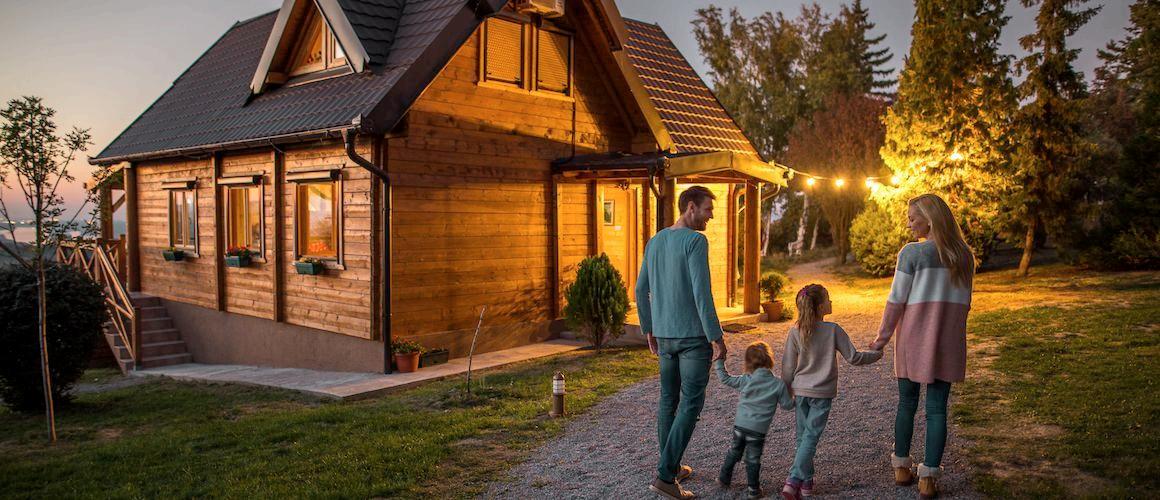
Through the years, movie direc tors and production companies have used Hartman’s horses for their sets.
According to Locations Southwest and Productions Services (LSW), “Roger was a great horseman and we used his horses for a lot of productions. He did some work for Kenny Rogers, The Gambler movies and provided training for riders when we were doing different TV commercials. He even had a zebra

wine harvest is in full swing in Camp Verde as several friends came together at sunrise to pick Cabernet Franc grapes at Clear Creek Winery. “This was the wettest monsoon we’ve had in a few years,” said Clear Creek Winery Owner Ignacio Mesa. “It delayed the ripening of our grapes by three weeks. The results of the Merlot and Malbec we just fermented look very promising. Vintage Year 2022 will likely be a good vintage year for us.”
The team, which included Mesa and two of his employees, Vineyard Winery Operations Specialist Joe Birner and Assistant Winemaker George Peterkin, allotted a total of 1,000 pounds of grapes.

Sitka Alaska Commercial Salmon Fisherman John Murray was visiting friends in Camp Verde and joined the group. “I really liked the whole experience of harvesting grapes and meet ing Ignacio and seeing his operation – and his land was really enjoyable. I had a lot of fun. If someone came to look at my fishing operation, they would feel the same way. It’s so cool to take in a small family farmer making a living.”
Also on the team was retired Camp Verde Wine Maker Kris Metzler. “Picking grapes with friends is as good as sharing a bottle of wine with them,” he said. FBN
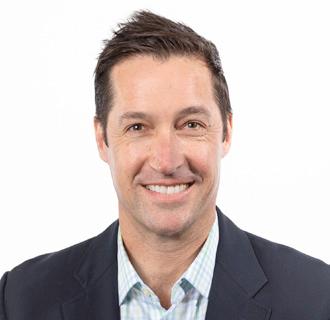
Northern Arizona Adaptive Sports Association, a non-profit organization that facilitates recreational activities for people of all abilities, recently announced that it has changed its name to High Country Adaptive Sports and has undergone a complete rebrand.

The old name was geographically limited to a specific region of Arizona and the original logo was focused solely on winter sports. The new name has a broader appeal, making it more accessible statewide, and the updated logo better encompasses the year-round programs that are offered. In addition, the new branding is easily recognizable and was designed to improve recall. This will help the organization reach new participants and gain donors from outside the Flagstaff area.
The team at High Country Adaptive Sports is hopeful about the opportunity to expand its presence. “When I started teaching adaptive ski lessons in 2011, I didn’t understand how big the need in our community was or how impactful adaptive recreation can be,” said founder Alex Davenport. “Our dreams of creating year-round opportunities are upon us and I’m so excited about what this rebrand will do for our students and their families!”
Those familiar with the former NAASA can expect the same great organization they’ve come to know, but can look forward to a more visible presence in the marketplace, including a new, easy-to-use website. For more information, visit highcountryadaptive.org
Long ago I remember hearing that dreams are simply wishes if there’s no action behind them. But miracles are something else. “Miracles are the products of intention,” says motivational speaker Eric Thomas. They are within reach and they happen all the time. But we can’t just wish and hope and dream. We have to get serious with our intentions and put real human effort behind them.
In his book, “You Owe You,” he says we can attract our own miracles and he talks about putting ourselves in miracle territory.
For example, If you want to work for a specific company, you start doing research, you get to know the organization and the background of the people there. What do they do and how did they land their jobs? You study the job openings and job requirements. You improve your miracle chances by acquiring the skills you need or earn ing the degree that qualifies you. Your miracle may require you to relocate to a different city, or join new organizations or make friends already in the industry. You want to put yourself on a collision course with your miracle.

And yes, sometimes miracles happen without doing the work. “People win lotteries all the time,” you might say. “Princes fall in love with commoners,” and “Relatives that no one’s ever heard of leave you money.” Sure, this can happen. Thank you, Aunt Nancy! But as
the Arizona Lottery reminds us, “You can’t win if you don’t play.” So, becoming qualified to be a player in the game of life requires work and it also puts us in miracle territory.
Thomas says, “There’s a ripple effect when you exercise your gifts,” he writes. “The ripples get bigger and bigger until they become waves. These waves and even the ripples are miracles.”
If you want to get in the way of miracles, here are some of his suggestions:
1. Put yourself in places where a miracle could happen, like where the people hang out that you want to work with.
2. Identify the opportunities you would like to receive and make a list of what it would take to get there.
3. Start building your path toward your next miracle. Visualize each step and even what it looks like and feels like, until you are in miracle range to seize the opportunity. FBN
//
Bonnie Stevens is a public relations consultant. She can be reached at bonnie. stevens@gmail.com.
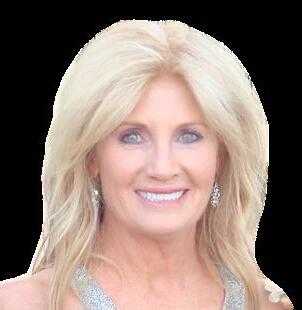
For example, If you want to work for a specific company, you start doing research, you get to know the organization and the background of the people there. What do they do and how did they land their jobs? You study the job openings and job requirements. You improve your miracle chances by acquiring the skills you need or earning the degree that qualifies you.
//
are ballot measures that would authorize issuing general obligation bonds to fund infrastructure improvement projects and create rental and homeownership opportunities.
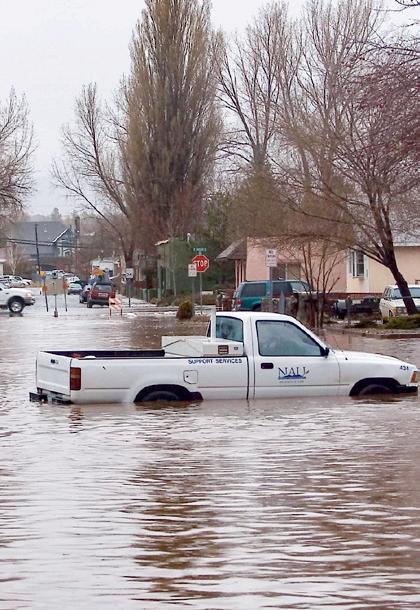
We face an ever-increasing risk of wildfires and flash flooding in our community. Large-scale projects are needed to better equip neighborhoods to withstand post-wildfire flooding. If approved by voters, Prop 441 will pay for increased capacity stormwater infrastructure to help lessen the impacts of future floods.
In recent years, the median sales price of a home in Flagstaff rose by 166 percent, while the median income in our area rose by only 37 percent. If approved by voters, Prop 442 will dedicate $20 million dollars to create rental and homeownership opportunities for residents of Flagstaff.
Flagstaff’s capacity to treat its wastewater hasn’t increased in over 30 years. If approved, Prop 441 will provide funding for new equipment to allow the Wildcat Hill and Rio de Flag Wastewater Treatment plants to process more solid and liquid waste in order to meet demand. Funding would also be used to purchase upgraded equipment that is more energy efficient.
Props 441 and 442 are projected to be funded within the current secondary property tax rate. The City is paying down existing bonds, which then provides capacity for new bonds. By adding new bonds as old bonds are paid off, new projects can be funded within the existing secondary property tax rate.
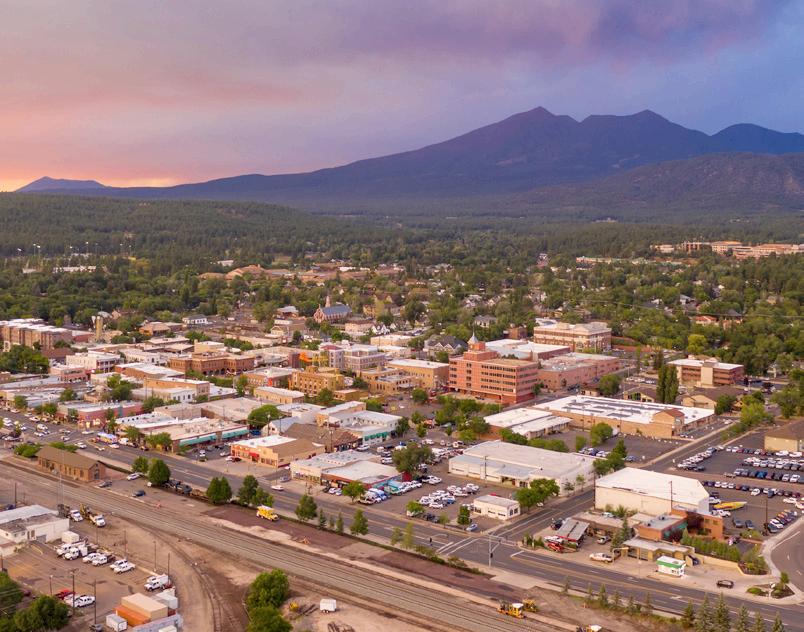

Proper equipment is vital in fighting wildfire. If voters approve Proposition 441, the City will be able to buy two new wildfire engines suited for rough terrain or bad weather. Plus, two new water trucks to help firefighting in areas without hydrants will also be purchased. These will replace old equipment with safer, up-to-date trucks.
Scan the QR code or visit
Props 441 & 442 were recommended for the November 8, 2022 election by the Flagstaff Citizen Bond Committee.
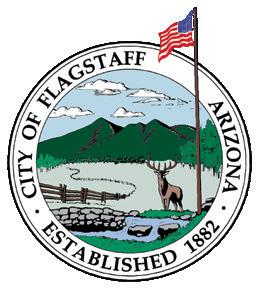


North Country HealthCare’s 3rd annual September Screen ing Event brought out 124 patients for breast and cervical cancer screenings, performed at no cost to the women. “It is so important that women get screened early for breast and cervical cancer because catching these cancers in their early stages can literally save their lives. Both of these cancers are easier to treat earlier on than in later stages,” said Kristi Boniella, Well Woman HealthCheck Program manager. The two-day Well Woman HealthCheck Program at NorthCountry Healthcare’s 4th Street location also provided health education, community resources and connections to healthcare providers.
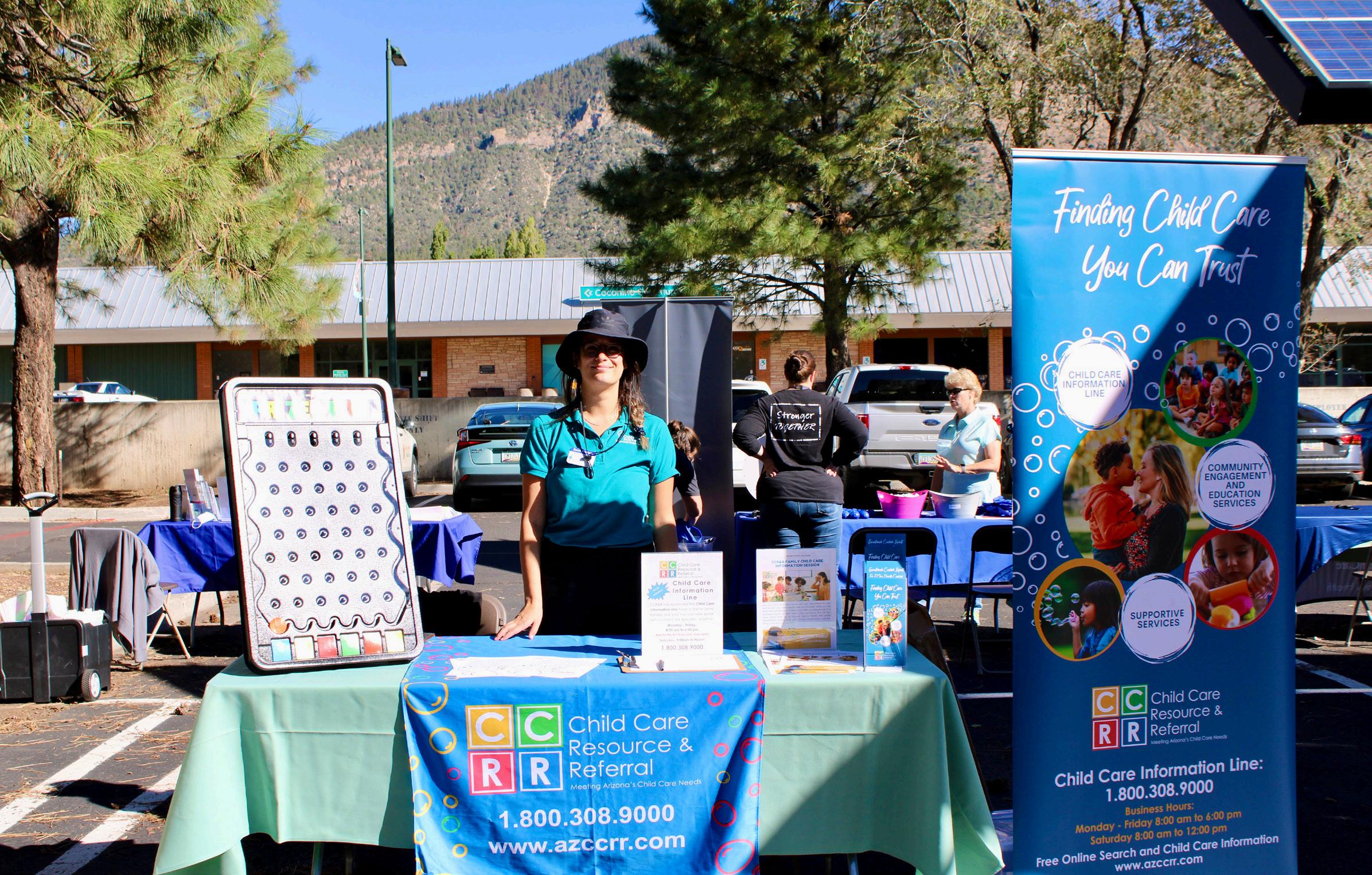

As post-wildfire flooding devastated parts of the Flagstaff community during the summer monsoon season, volunteers from Nestlé Purina PetCare helped people and pets.
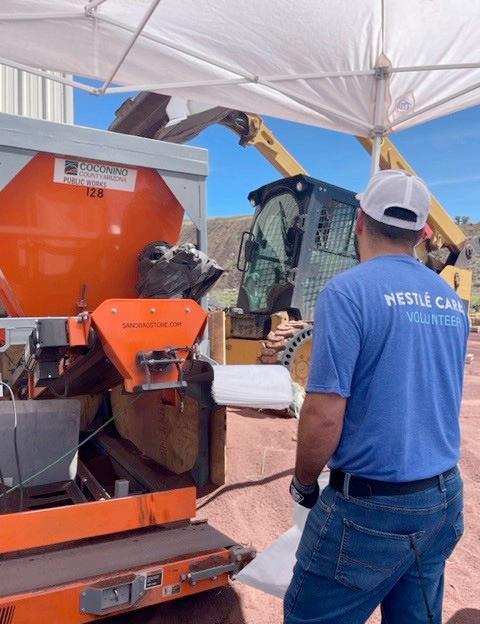
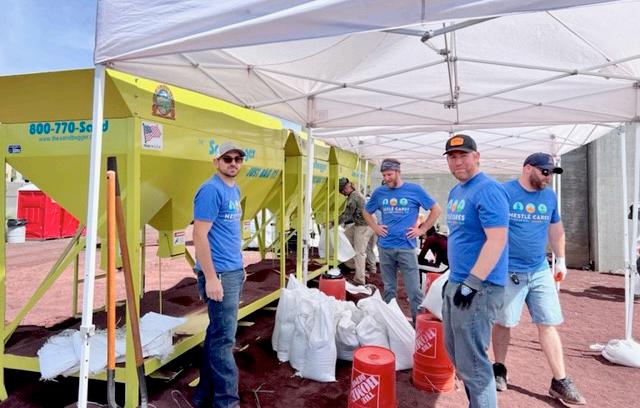
“In times of natural disaster all over the world – like we experienced with the Pipeline Fire and epic monsoon season – we strive to help by supporting our non-profit partners and team members,” said Purina Flagstaff Training Specialist Amanda Leonhard. “At our plant, we figured at least one in three factory members was impacted by the forest fire or the flooding that followed. We were focused on checking in on them and prioritizing their health and safety. It’s hard to come to work when you’re worried about your home.”
The local Purina manufacturing plant con tributed $10,000 to the United Way of North ern Arizona to support the emergency efforts. It also sent pallets of pet food to the Coconino Humane Society and Kingsmark Kennels in Doney Park. In addition, Purina employees volunteered with the United Way to fill more than a thousand sandbags.
“In times of natural disaster all over the world, helping the community is part of the Purina culture,” said Leonhard. “I’m very proud of our people and how they came to gether during this crisis.”
During the pandemic, the local plant sent truckloads of pet food to help Navajo Nation families feed their animals when they were in crisis.
Purina has been part of the American story for more than 100 years. The iconic brand began as Ralston Purina Company in 1894. It started as a supplier of farm animal feed, moved into breakfast cereal production for people and then to petfood in 1926.
“It’s got a long history of making pet food,” said Nestlé Purina Flagstaff Factory Manager
Mike Ferritto. “We’re very passionate about providing high levels of nutrition to pets.”
Purina has played a significant role in Flag staff since 1975. The manufacturer employs more than 300 people and produces more than 300,000 tons of dry dog and cat food each year and has an annual impact of $54 million on the local economy. The company promotes the positive connection between people and pets and encourages dog-friendly workplaces, such as the offices of the Flagstaff plant.
For more information about the values be hind the brand, watch the extended interview with Nestlé Purina Flagstaff Factory Manager Mike Ferritto on Zonie Living: Business, Ad venture and Leadership at StarWorldwideNet works.com. FBN
Starting November 28 visit our Light A Life booth at the Flagstaff mall to help support our mission and continue to be the only non profit Hospice in Northern Arizona providing care regardless of ability to pay. Remember your loved one by placing a tag on our Christmas tree, pet tree, or Menorah. Receive a beautiful handmade ornament with every donation of $25 or more.Employees from Nestlé Purina PetCare in Flagstaff volunteered to fill sandbags to help community members hold back floodwater and debris during post-wildfire flooding.
 By Patrice Horstman
By Patrice Horstman
This November, voters in Coconino County will have a choice.
On behalf of the Coconino Coun ty Board of Supervisors, I am pleased to report our in-custody Coconino County Jail programs are working and showing great results. An important outcome is that many of our community members have received the support they needed, and are being reunited with their families and integrated back into our communities. Many have found rewarding work and have stayed on the path of recovery from addiction. The changes we’ve seen are significant and have occurred since the halfcent Jail Tax took effect in 2007.
Known as the County Jail District Excise Tax (sales tax), the Jail Tax has funded in-cus tody programs that have provided substance abuse and mental health treatment and helped people gain life skills and job training, receive education, practice mindfulness, adopt healthy habits and connect with resources that will support them in their transition to a life out side of jail.
The County Jail system has experienced sig nificant success with these programs in place, particularly with the substance-abuse program EXODUS. This multi-faceted voluntary 90day course teaches participants about how drugs impact the body and brain, and helps inmates see a different life for themselves, free of addiction. It offers meditative practices, communication and parenting skills, and expressive arts. It provides tools for managing emotions like anger, shame and grief. Case managers say they see a marked difference in those who go through the EXODUS program and those who don’t.
Coconino County Sheriff Jim Driscoll says these programs have had a game-changing effect in the vicious cycle of alcohol and drug abuse, crime and the return to jail. “Substance abuse is a serious problem and a recurring one for our County Criminal Justice System,” he said. “However, with Jail Tax-funded programs, we’ve witnessed a dramatic and inspirational shift.”
The National Institute of Corrections reports that, on a national average, 70% of in mates return to jail in places where there is no in-custody drug and alcohol abuse program. But with EXODUS in our County Jail, the scenario has flipped; only 30% or fewer people who have participated in the program have returned to jail.
“EXODUS, along with enhanced education al programs, job training and life skills, makes valuable use of time spent in custody,” said Sheriff Driscoll. “With funding from the Jail Tax, jail becomes a place where people can heal, re-set their lives and have hope for an addiction-free future. They leave jail with emo tional and social tools, job skills, a renewed outlook and optimism for a
life outside of jail.”
By having such programs in place, there are other benefits as well. For example, the county received grant funding this summer to establish Pathways to Community, a program that continues valuable support for those exiting the jail system, including for housing, food, clothes, job training, addiction recovery or mental health.

In addition, funding generated by the Jail Tax covers most of the jail operating costs, which includes staffing, maintenance, renovations, medical expenses and food. This support means the $22 million needed to run the jail each year does not have to come from somewhere else, like the County General Fund or local city budgets.
The half-cent sales tax (50 cents on a $100 purchase) is collected on the same taxable purchases as the state sales tax, such as retail goods and services, as well as lodging and restaurant charges. Household groceries are not taxed and approximately one-third of the Jail Tax is paid by visitors and non-residents because they benefit from the Jail Tax as well.
There is no doubt that programs fund ed through the Jail Tax have changed lives. Individuals and families are healing, neigh borhoods are safer against drug-related crimes and the jail population has decreased. In addi tion, most of the operating costs necessary for running the County Jail are paid for through the Jail Tax.


The current term for the Jail Tax will expire on June 30, 2027. On the General Election bal lot, voters are being asked whether to extend the County Jail District Excise Tax by 25 years, to be in effect through Dec. 31, 2051.
The question will appear as Proposition 445: Shall the Coconino County Jail District Board of Directors be authorized to extend the term of the existing County Jail District Excise Tax (sales tax), of one half-cent ($.005) by twenty-five years?





The Jail District Sales Tax Publicity Pamphlet currently is arriving in the mail. It includes letters from county residents, frequently asked questions and locations for assigned polling places.
Remember, the last day to register to vote is Tuesday, Oct. 11. Early voting begins Wednes day, Oct. 12. And, the polls will be open from 6 a.m. to 7 p.m., Tuesday, Nov. 8.
For more information about the Jail District Sales Tax Extension, Proposition 445, please go to coconino.az.gov/jailtax. FBN
For more information related to voting in the Novem ber election, contact the Coconino County Elections Office at 928-679-7860 or visit coconino.az.gov/ elections.

has arrived. The air is crisp. The leaves
changing to yellows, reds and browns,
students at Coconino Communi ty College are deep into their studies for the semester.
interim president for the college these few months, I am quite amazed to see the passion of the faculty and staff in their dedication to help meet community needs and students’ dreams for their futures. To that end, partnerships, as I have learned, have been a cornerstone of CCC’s efforts, and I would like to spend a little time discussing three of our most recent partner ships.
On Oct. 3, more than a dozen recruits from local law enforcement agencies will undergo 21 weeks of training at the newly established High Country Training Academy at CCC. The acade my was made possible through the partnership of multiple agencies, including the City of Flagstaff and its police department, Coconino County and its sheriff’s office, CCC, Yavapai College and Northern Arizona University and its police department.
The academy will allow for local law enforce ment agencies to keep their recruits locally, in their own homes, supporting their families, while they complete the rigors of the 24-cred it-hour academy. It will help agencies save on the expense of having to house and support recruits at academies out of the region, and it will aid all Northern Arizona communities in receiving quality, professional officers who have a deeper understanding of the policing needs of the communities from which they come. The academy, it is my hope, will be part of a wider effort being focused on by local officials at the state legislature to create a public safety training facility here at home to function as a hub for the training needs of the area – law enforcement, fire services and emergency services.
I have learned firsthand the challenges with finding affordable housing in the Flagstaff area when my husband, Terry, and I moved here to step into my interim position at CCC. Luckily for the residents of Flagstaff and beyond, Hab itat for Humanity of Northern Arizona works tirelessly to help people for whom the dream of owning a home can be more than just a dream.
The College’s Construction Technology Man agement students learn valuable on-the-job experience and service to the community by helping construct panels for Habitat “starter homes.” The homes, about 500 square feet, are $100,000 and built on city-owned land. The people who are selected to own them can do so with
$1,000 down and pay $833 a month. Whatever they put into the home, they receive back when they sell the home back to Habitat to serve as a nest egg on a larger home, or to go toward a business they’d always hoped to start. The first home, which can be seen from Butler Avenue in Southside, is nearly complete, and CCC students are currently in the process of constructing the panels for a second home next door.
The four community college districts covering all Northern Arizona – CCC, Mohave Commu nity College, Northland Pioneer College and Yavapai College – have entered into an historic partnership agreement to help better serve students. The agreement, called the Northern Arizona Community College Partnership, calls on the colleges to collaborate and combine resources to better serve residents and commu nities throughout Northern Arizona.
The work includes sharing college courses to improve student success and completion as well as enhancing workforce development with each district’s wide array of unique programs. Also, the colleges will focus efforts to collaborate in the areas of credit and non-credit offerings, curriculum development, data sharing, business functions, student services and other services to offer a network of higher education access to residents of Coconino, Mohave, Apache, Navajo and Yavapai counties.
I must also point out that all four college presidents will also work together to strengthen their partnerships with K-12 schools, work force development partners and universities. In CCC’s case, we continually work with our neighbor next door, NAU, to improve our partnership on a variety of fronts as is shown with the creation of the new law enforcement academy.
I am continually impressed with the number and quality of the partnerships I have seen since arriving at CCC. It is my privilege to serve our students and the communities in Coconino County for this brief time while a new, perma nent president is selected to serve. I invite you to learn more about CCC and the programs the college has to offer. For more information about degrees and certificates offered by Co conino Community College, please visit www. coconino.edu. FBN
Dr. Christal M. Albrecht is the interim president at Coconino Community College.


For more information about the Coconino SBDC at CCC, or to make an appointment for assistance, visit https://www.co conino.edu/SBDC. For more information about Elevated Shredding and Strides 2 Thrive, visit http://elevatedshredding. com.


What a difference a year makes. The season has changed to autumn and as the leaves begin to turn, our real estate market is seeing some signs of cooling temperatures as well. Yet, even with multiple increases in interest rates and greater inventory, home prices are still higher, even if not by much, than this time last year.
As of September 2022, the average single-family home price in Flagstaff is $734,092 and was $729,044 September 2021, which is only $5,048 more than last year. However, at the height of the market, an average single-family home cost $984,502 in February 2022. Back then, it was conceivable we would see the average home reach a million dollars. But now, just eight months later, the outlook is a bit different. Price increases in housing had been astronomical and unsustainable and are now more moderate.
The price per square foot for a single-family home crept up to $429 in April 2022 and is now $354 per square foot. Interestingly enough, the price per square foot for con
dos/townhomes is currently similar, at $351. Typically, the gap between price per square foot for attached and detached homes is about 10%.

During September, there were two new condominiums that closed in Pine Canyon, each for over a million dollars, pushing the average price per square foot on attached product up.
The average price for a condo/ townhome is $539,742 and was $492,119 last September, with a year over year increase of $47,623. When there is downward pressure on home pricing, attached product tends to decrease more quickly than detached product. It is uncertain if we will see this trend in the fourth
quarter of this year or not due to some new construction projects that were pre-sold and are just now starting to be delivered.
At this moment, there are 177 single family homes available for sale, plus 45 condos/townhomes. Inventory usually increases during the summer months and can dwindle during the winter months.
A healthy market has approximate ly four to six months of supply available of homes for sale. We currently have a two-month supply, which means buyers have options and can be more selective in their home search, yet we are not totally balanced. Days on market have not creeped up to triple digits yet, so
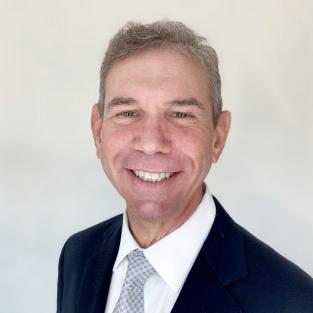
homes that are in good condition and priced well are moving. Sellers with unrealistic expectations are seeing price reductions and longer days on market.
Interest rate increases have been the most notable reason for cooling on a local and national level. “The housing sector is the most sensitive to and experiences the most immediate impacts from the Federal Reserve’s interest rate policy changes,” said Lawrence Yun, chief economist at the National Association of Realtors, in a statement.
“The softness in home sales reflects this year’s escalating mortgage rates. Nonetheless,

homeowners are doing well with near nonexistent distressed proper ty sales and home prices still higher than a year ago.”
FBN
Lori Anna Harrison is a Flagstaff native and 18-year real estate veteran commencing post graduate school with Shea Homes. Lori is a full-time licensed REAL TOR with Zion Realty, LLC. Call her today at 928-396-5851 or text 602-524-5674, email lori@AZdreamlifestyle.com and visit AZdreamlifestyle. com.


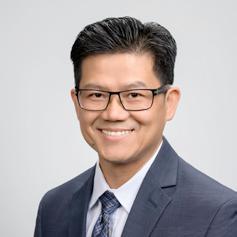
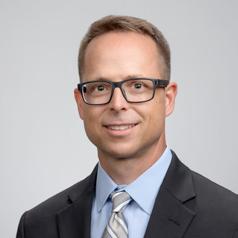

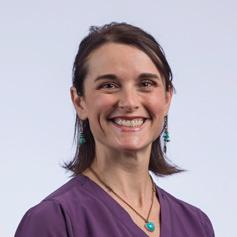
Peripheral arterial disease, or PAD, is a whole-body disease that’s manifested in the legs. It’s a buildup of cholesterol plaque in the peripheral arteries of the body, which are found in the arms, legs, hands and feet. “If you have plaque buildup in your legs, there’s a good chance you could have plaque buildup elsewhere in the body like in your heart or your neck,” said Comprehensive Integrated Care Chief Medical Officer Dr. Joel Rainwater. “It is the same type of disease that causes coronary artery disease, which can lead to a heart attack.” This buildup of plaque limits the amount of blood flowing through the arteries.
“Blood brings oxygen and nutrients to your feet and toes, which they need to stay healthy,” explained Rainwater. Without proper blood supply, nerves and muscles are affected. The body reacts in the form of pain or leg cramps, signaling that medical attention is needed. Rainwater continued, “If you’re a nerve cell and you don’t get oxygen or nutrients or vitamins, how are you going to function?” The blood vessels carry those nutrients into your tissues for your nerves to use and if you don’t have good circulation your nerves can’t function normally. “How do your nerves tell you what’s wrong? They start to itch, they might start burning, they might become numb, or they might have sharp, shooting electric style pain. That’s your nerve crying out for help. PAD is a serious condition that can’t be ignored.”
It’s often overlooked because people believe that it’s a sign of aging when they can no longer tolerate walking because of pain or cramping in one or both of their legs, or they have a burning or aching pain in their feet and toes while they’re resting or lying in bed. “It’s not normal to lose mobility over time, it’s not normal for a patient to have constant leg pain, to not be able to walk from their house to the mailbox and back,” said Rainwater. “PAD is often felt in the legs or feet first. Patients notice burning, tingling, cramping or wounds that won’t heal.” Sometimes symptoms are called neuropathy, but in many cases they’re being caused or being made worse by PAD. These changes to everyday living could be signs of poor circu lation and shouldn’t be dismissed as part normal aging.
“PAD is one of those conditions that’s sneaky,” continued Rainwater.
“The most notorious aspect of this disease is that it creeps up on patients and makes them believe that it’s normal, that it’s typical, and that they’re going to have to suffer this for the rest of their lives.” He urges people to talk with their doctor about any changes they no tice in their feet or legs. “The earlier the condi tion is identified, the better your opportunity for preventing it from getting worse.” Lifestyle changes, medication and treatment can help prevent PAD from progressing to dangerous consequences.
“The good news about PAD is that there’s hope. There is treatment and it’s excellent.” A minimally invasive procedure is done in an office setting and patients are home within hours and back to everyday activities with almost no downtime, no stitches and no over night hospital stay. Medicare as well as most insurance plans will cover treatment.
“So what we do,” said Rainwater, “is go into the bloodstream to find the blockage with imaging guidance. Then we remove the blockage with small tools that can go into the smallest arteries, and we remove the blockage and restore that blood flow without surgery, without scalpels, without stitches.”
Through the past 20 years, diagnosis and treatment have advanced. The biggest benefits are how easy it is for the patient and the differ ence it makes in their lives. “One of the most gratifying things that I experience in my job is seeing patients, sometimes even in recovery, feel their foot for the first time in years,” said Rainwater. “When they come back for their follow up visit, that’s when we really get to talk about how much better their life is and how much more hopeful they are. They start making plans again, they start thinking about vacations again, and how they are going to be able to do the things that they used to do in their lives.”
FBN
Dr. Joel Rainwater, M.D., is an interventional radiol ogist who uses imaging technology and techniques to care for medical conditions that affect the nearly every organ system in the body. These conditions include PAD, Enlarged Prostates, Liver Cancer, PVD, Compression Fractures, and Uterine Fibroids. He can be reached at Comprehensive Integrated Care, 928719-7400.
Reisha Zang is director of communication at CiC. You may contact her at 928-7197400 or reisha.zang@ciccenters.com.
“The good news about PAD is that there’s hope. There is treatment and it’s excellent.” A minimally invasive procedure is done in an office setting and patients are home within hours and back to everyday activities with almost no downtime, no stitches and no overnight hospital stay. Medicare as well as most insurance plans will cover treatment.
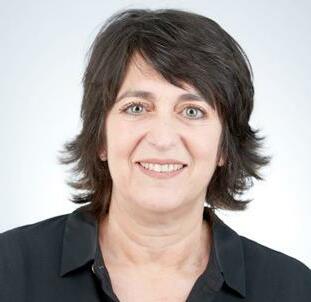
 By Meg Roederer
By Meg Roederer
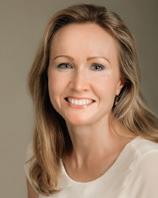




It’s the time of year to get creative, have a little frightful fun, carve a pumpkin and enjoy Flagstaff’s leaf-peeping season. Take in the season with haunted tours and Hal loween happenings – here are seven spooky ideas.
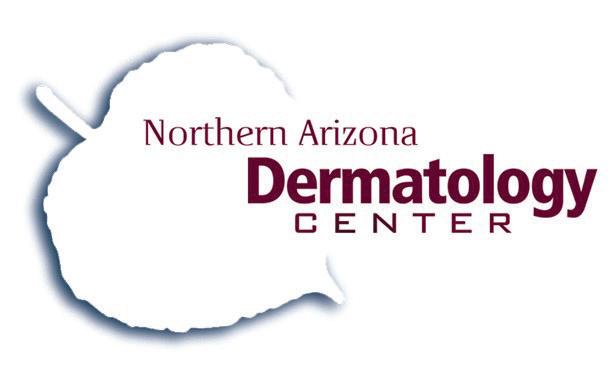


This mountain town draws an allure and mystic Flagstaff versatility intrigued by the authentic Old West feel of downtown. Locals are proud of the historic preservation that keeps buildings like the Weatherford Hotel and the Hotel Monte Vista at the center of activity all year round. But amid the noise and bustle of modern life, the spirits of a town built on the rumblings of the railroad are sometimes restless. While the area is gaining popularity as a place for ghost hunters, one local group has been leading explorations for over five years. Freaky Foot Tours takes to the streets and transports their guests back in time to the Wild West of the late 1800s. Their nightly walking tours are led by local guides well-
versed in the town’s quirky past and eccentric characters. Not only that, they know where the bodies are bur ied and where the ghosts hang out! Get tickets at freakyfoottours.com.
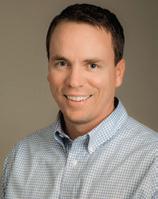
The historic Riordan Mansion makes a great backdrop for spinning yarns appropriate to the Halloween season. Purchase tickets early for an Oct. 2730 tour at 7, 8, and 9 p.m. each night, because this very popular guided tour sells out and is for adults (no children under age 12). The storytelling session involving tales of the fantastic and the factual. Arrive early for your tour to get your fortune told using runes. Dress for the weather, as a portion of the tour will be outside. Space is limited, advanced ticket purchase is required. Cost is $16 per person. If you cannot stand for an hour or are unable to do stairs, contact the park at 928-779-4395 to arrange for accom modations. Tickets can be purchased at https://azstateparks.com/reserve/ Activities/ProgramsAndTours.aspx or call 928-779-4395 for additional infor mation and same-day availability.



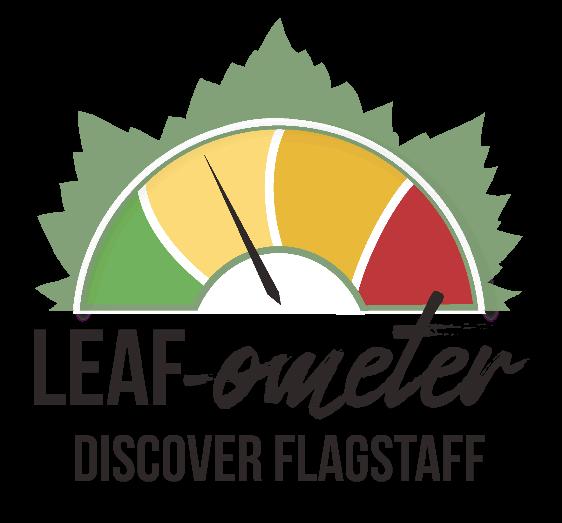

With more than a century of haunted history and ghostly legends about bank robbers, ladies of the night, eccentric hotel guests and unfor tunate lovers, Flagstaff has earned the reputation as one of Arizona’s most haunted cities. Stroll through Flagstaff’s paranormal past with a free self-guided brochure. More informa tion at discoverflagstaff.com and free tour map at the historic downtown Flagstaff Visitor Center (1 E. Rt. 66).
The All-Ages “Ghosts of Flagstaff Ghost Tour”

Monsoon season officially ended on Sept. 30, and at this point, I feel we should make this a new city holiday. We faced such an unprecedented summer of wildfire and post-wildfire flooding, but the city is in full swing working on long-term mitigation strategies now that response efforts have dissipated. The new detention basins above Coconino Estates will be com pleted by the end of October. I am amazed at the speed at which we were able to secure funding, create the design and complete this project, and
I thank city staff and all our partners for seeing this through. It will only have taken four months since the Pipeline Fire for the most impactful long-term flood mitigation strategy to be completed. The detention basins will help collect debris and can hold up to 28 Olympic-sized swimming pools’ worth of water. This will have a huge positive impact on downstream residents.
In other flood mitigation news, we are elated to receive $32.5 million from the federal INFRA grant for our Rio de Flag Flood Control Project
In other flood mitigation news, we are elated to receive $32.5 million from the federal INFRA grant for our Rio de Flag Flood Control Project that has been in the works for the last 25 years and will help mitigate flooding in 20% of our city.

that has been in the works for the last 25 years and will help mitigate flooding in 20% of our city. We were the only city in Arizona to receive this round of INFRA grants and it is a testament to the hard work of staff and the partnerships that have devel oped to address our critical flooding issues. We are in non-stop discus sions and planning meetings with the Army Corps of Engineers and BNSF railroad to get shovels in the ground next year.
We have several important items coming before the Flagstaff City Council here soon. A new licensing system for vacation rentals will help us address the most troublesome of rental properties. We were previously restricted by the state legislature to put any regulation or licensing on short-term rentals, but some of these restrictions have loos ened as of Sept. 24. We can now distribute licenses and revoke the licenses when there are repeated offenses of noise and other nuisanc
es. We also have a noise ordinance coming forward. We have received many complaints about noise coming from loud music and loud vehicles late into the night in our neighbor hoods and we are looking to develop a tool to help address some of the more egregious occurrences. Another big item on the upcoming agendas is the proposal by Northern Arizona Healthcare to build and move their medical facility by Fort Tuthill. All of these issues need public input so we can work in the best interest of the community and, as always, I urge community members to email City Council to provide input at council@ flagstaffaz.gov. FBN
These statements and views are solely my own and do not necessarily reflect the views of Flagstaff City Council.
Paul Deasy is the mayor of Flagstaff.



An audiogram is a graph that re cords the way a person responds to specific sounds called pure tones. The audiologist measures hear ing threshold at the pure tone of each frequency. Hearing threshold is the intensity at which a pure tone is barely detected 50 percent of the time.
Various frequencies or pitches are measured to determine how you hear at each area of the hearing organ. During a hearing test, the frequencies used in speech and in common everyday sounds are tested. When frequency is plotted on the graph, low pitches are
on the left side on the vertical lines progressing to the highest frequencies on the right side of the graph. An audiogram is similar to the design of a piano – low pitches to the left, higher pitches to the right.
Intensity is measured to determine how loud a frequency needs to be heard. A decibel (dB) is a measurement of sound loudness (sound power) and grows more rapidly than a linear measure ment. For example, 20 feet is 20 times longer than one foot but 20 decibels is 100 times more powerful than one decibel. When intensity is measured, it is plotted on the audiogram on a hor izontal line. The lower the mark (the
//
Because hearing is different at each frequency, it is not simply a matter of making sound louder. Each frequency must be modified independent of the next, so that you can hear as comfortably and naturally as possible.
//
larger the number) on the graph, the more sound power is needed to hear it.
Earphones or insert earphones are used to test hearing as it passes through the outer, middle and inner ear. Sound heard through an earphone is called the air conduction response giving you the degree of hearing loss. To determine the type of hearing loss you have, a bone conduction oscillator is placed on the mastoid bone behind your ear. The bone oscillator bypasses the outer ear and middle ear and gives a direct response of the hearing organ at each frequency. This is called the bone con duction response. The air conduction and bone conduction responses are plotted on the audiogram.
DEGREES OF HEARING LOSS
0 dB - 20 dB normal hearing
20 dB – 40 dB mild loss 40 dB – 50 dB moderate loss 55 dB – 70dB moderately severe 70 dB – 90 dB severe loss >90 dB profound loss
N Sensorineural loss - the hearing organ is impaired.
N Conductive loss - the outer or mid
dle ear has impairment. The hearing organ is normal.
N Mixed loss - both conductive and sensorineural impairment.
CONDUCTIVE HEARING LOSS
Hearing loss that is the result of block age, damage, or disease to the outer and/or middle ear is called a conduc tive loss. The conductive mechanism consists of the outer ear, ear canal, ear drum, eustachian tube and middle ear bones. Conductive hearing loss means there is a difference between bone conduction responses of the hearing organ and air conduction responses. Typical causes of this type of loss are ear infection, otosclerosis, ruptured eardrum, and wax in the ear canal.
Hearing loss because of dysfunction in the hearing organ or in the hearing pathways in the brain is called senso rineural. This type of loss has the same response of intensity for air and bone conduction. Typical causes of this type of loss are noise exposure, side effects of medication, heredity and viruses.
Hearing loss that has both conductive and sensorineural
causes is known as a mixed hearing loss. This type of loss has some dys function in the hearing organ and some dysfunction in the mechanical area of the hearing mechanism. Typical causes for this type of hearing loss are nerve damage, wax build up in the ear canal after you already have a hearing loss, otosclerosis, ear surgery, heredity and trauma.
As you can see, hearing loss is com plicated to understand and manage. Don’t trust your hearing and ability to interact with others simply to the low est bidder. Because hearing is different at each frequency, it is not simply a matter of making sound louder. Each frequency must be modified inde pendent of the next, so that you can hear as comfortably and naturally as possible. Find an audiologist who will give you time to discuss your needs and be willing to research the best possible solution for you. FBN
Trinity Hearing Center is located at 1330 N. Rim Dr., Suite B in Flagstaff. For more infor mation, visit TrinityHearing.net.

Karon Lynn, Au.D., is a doctor of audiology with 30 years of experience working with hearing impaired individuals. She may be reached at 928-522-0500 or at audio@trinityhearing.net.

The origins of the modern-day business incubator can be traced back to Bell Labs, a company started by Alexander Graham Bell in 1925. Bell started the company to patent and launch his revolutionary invention, the telephone. Bell Labs’ journey and contributions to modern technology is a fascinating story. History-Computer.com does a beautiful job of explaining the origins and evolution of Bell Labs, including the involvement of companies like AT&T, Western Electric and Nokia.
Alexander Graham-Bell collaborated with many scientists, providing a space in which they could research and create technolog ical marvels. Many of these inventions are embedded in our everyday lives, like lasers and the transistor. Some inventions were precur sors to the ease with which we communicate today, like the fax machine and, of course, the telephone. In its heyday, Bell Labs earned numerous Nobel Prizes for the discoveries that came from the organization.
So, why the history lesson? Because Bell Labs’ efforts to provide a space for inven tors and creators to thrive is the basis of the incubators we know today. In the 21st century, we now have incubators and accelerators (an incubator helps entrepreneurs flesh out business ideas while accelerators expedite the growth of existing companies with a minimum viable product) for just about any industry in all corners of the globe. Inventors and founders no longer have to fend for themselves or relo cate to specific cities to get the help they need. These brave pioneers can start, run and grow their businesses with the best resources, educa tion and access to funding wherever they are.
While the resources that incubators/acceler ators provide vary, here’s a list of some of the perks of belonging to one:
Office space
Access to subject matter experts
Business development curriculum
Workshops
Community of peers
Access to funding

Shared resources (marketing, HR, bookkeeping, etc.)

An incubator’s goal is to help founders build viable, sustainable organizations that will create jobs and
contribute to the economic vitality of the cities they serve. Founders are taught how to explain or pitch their ideas and solutions to their target market’s pain points with confidence. Prepar ing founders to pitch for funding is a critical aspect of most incubators.
After 13 seasons, I believe many of us are fa miliar with the phenomenon of “Shark Tank.” On this show, ordinary men and women with unique products and services pitch to a panel of investors, “the Sharks.” The sharks listen and ask clarifying questions before deciding to extend an offer to fund in exchange for equity or “ownership” in the company.
If you’ve watched the show, you can prob ably relate to the white-knuckled, nail-biting deal situations that transpire. The show has done a great job putting a spotlight on what it takes to pitch to investors. Many don’t realize there’s a village of people helping these found ers put their best foot forward. From offering guidance to contestants on their pitches to providing everything required to showcase the contestant’s products, the producers and staff of the show guarantee that each presenter is prepared to wow the Sharks.

Incubators and accelerators provide this kind of preparedness and more in a less sensationalized atmosphere. Great incubators collaborate with angel investors and venture capitalists to create pitch opportunities for their founders. Y Combinator, a well-known and successful accelerator, has graduated several well-known companies from their program. Dropbox, Airbnb, Instacart, Twitch, Weebly and Reddit are a few big names that were grown within Y Combinator’s nurturing space.
The resources for entrepreneurs continue to evolve to meet the needs of their clients. When you’re ready to start exploring options for your business idea, know that you have a myriad of ways to get the help you need to be successful.
FBN
Diana White serves as the executive director for the Moonshot at NACET Flagstaff campus. Moonshot (www.moonshotaz.com) a 21-year-old 501(c)3 non-profit. The mission of Moonshot is to assist both entrepreneurs in building and scaling start-ups as well as developing entrepreneurial ecosystems for economic development purposes across Arizona.
//
Incubators and accelerators provide this kind of preparedness and more in a less sensationalized atmosphere. Great incubators collaborate with angel investors and venture capitalists to create pitch opportunities for their founders. Y Combinator, a well-known and successful accelerator, has graduated several well-known companies from their program.
//
$55,681.60 - $69,617.60
are seeking a skilled Senior Procurement
to join Team Flagstaff. In exchange for your knowledge and experience,
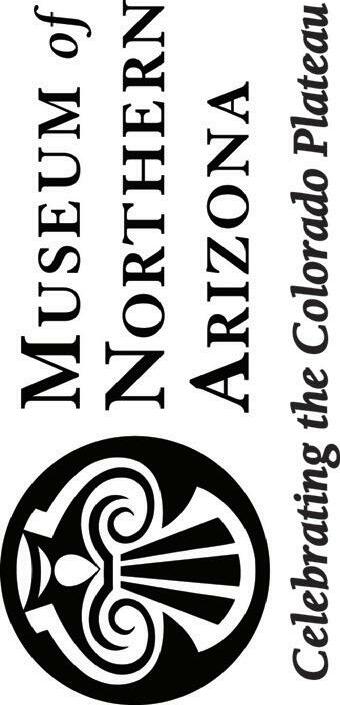
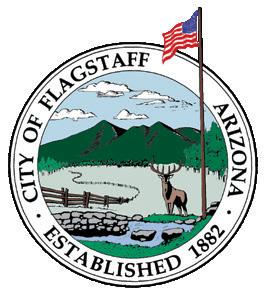


offer a full benefits package,
package,
COOL CAREERS.
state retirement.
We are seeking a skilled IT Analyst to join Team Flagstaff. In exchange for your knowledge and

COOL CAREERS. COOL PEOPLE.
Business News/Quad Cities
Media
News
a
$59,862.40 - $74,838.40
We are seeking two skilled Business Systems

to join Team Flagstaff. In exchange
your knowledge and experience,
a full benefits package, vacation
and state retirement.
COOL CAREERS. COOL PEOPLE. COOL MOUNTAINS.
for establishing
schedule and untapped
accounts
in person meetings
resume
Workforce recruitment in this special section is made possible for Flagstaff businesses at a 50% reduced rate as a result of a City of Flagstaff sponsorship. Please contact FBN:
or 602-909-3910 for more information.

Miracles happen at Horses with Heart.
One miracle that the workers at Horses with Heart talk about involves a 7-year-old boy who stopped talking after his mother died in a car accident. He wouldn’t speak a word. After one week, he was whispering to the horse to “move on.” After six weeks, he was talking to people.
Another miracle, according to the staff, happened to a military veteran with PTSD. He said the horse made him calmer than anything else.
Horses with Heart in Chino Valley is a therapeutic riding center that works with anyone from 4 years old to more than 80 years old, but they specialize in working with children with special needs and military veterans.
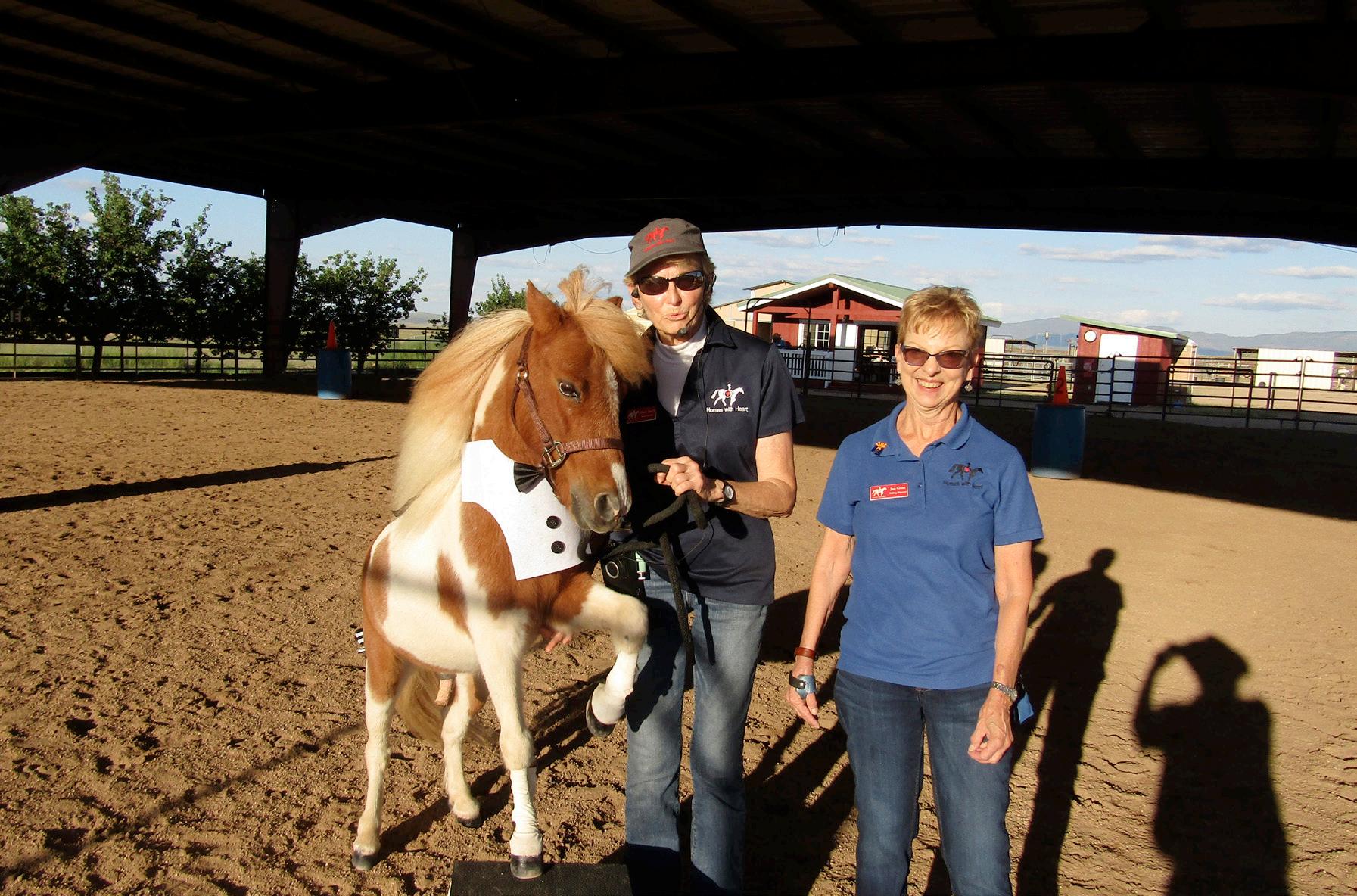
Jan Grise, riding director for Horses with Heart, said they don’t charge the veterans. “It’s our way of thanking them for their service.”
Horses with Heart has sever al other programs, ranging from competitions for the more advanced riders to their mini program, which brings mini ponies to nursing homes and schools.
Horses with Heart has 17 horses and only has room for one more. Grise says they would like to expand if they could get more land.
Horses with Heart has been going for 30 years, but has been on this property since 2010. It was created by a special needs teacher in Chino Valley, who moved to Dewey for a few years and then returned to Chino Valley.
The organization recently added a thrift store, Classy Pony Resale Boutique, with all the proceeds going to the non-profit. Horses with Heart brings in funding through grants, donations and fundraisers. The next fundraiser is Sequins and Saddles, Saturday, Nov. 12, at Embry-Riddle Aeronautical University.
Horses with Heart, which charges for lessons, has five staff members,
some part- timer workers and 140 volunteers. The organization averages about 75 riders per week. Horses with Heart is a PATH International Premier Accredited Center.
Grise said the best part of working at Horses with Heart is the smiles and the growth they see in the rid ers. “Our volunteers and horses are the heart of the program. They make it all possible,” she said.
Trudy Chapman-Radley, one of the founders of Horses with Heart, said it has been great watching the program grow for the past 30 years. “It’s awesome watching the passion that people have for Horses with Heart,” she said.
Chapman-Radley said horses nat urally calm people because the horses have the same gate or movement as people. “The horses don’t judge anybody.”
Some of the children riders she has trained are adults now. Horses with Heart board member Will Towne’s daughter is one of those who is now grown. He said when his daughter was riding, she was more comfortable here than anyplace else.
Horses with Heart was in the spotlight at a Chino Valley Chamber of Commerce mixer Sept. 14, with more than 100 people attending the event. The Chino Valley Lioness Club donated $300 during the event.

Marcia Gagnon, an instructor with Horses with Heart, said horses help youngsters with cognitive needs, but she also has a program for those 55 and older. “Horses are wonderful for kids because it helps them with motivation for their brain,” she said, adding that the kids often cuddle with horses and the horses return the kindness.
FBN
 By Roy DuPrez
By Roy DuPrez
More than 200,000 students recently returned to Arizona’s three public universities. As students return to school, the temp tation to use substances will rise. This behavior is now more dangerous than ever as the synthetic opioid, fentanyl, is becoming more prevalent in common ly abused drugs.

According to the Centers for Disease Control, more than 150 people per day

die from fentanyl overdoses. Under standing the dangers and the symp toms of fentanyl overdoses can greatly help in getting the medical attention one needs in case an overdose takes place. Let’s look at what makes fentanyl so dangerous and what can be done if you or a friend experience an overdose on this synthetic drug.
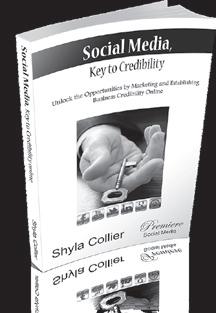
Fentanyl is a synthetic opioid 100 times stronger than morphine. The drug is a major contributor to nonfatal and fatal overdoses across the United States.
Encountering fentanyl may be more common than you think. Arizona authorities have seen an influx of fentanyl in the state in the past year and are expecting an increase in overdoses from the drug. According to the CDC, fentanyl is the leading cause of death among adults ages 18 to 45 in the United States.
The U.S. Drug Enforcement Administration recently reported that nearly half of all counterfeit pills test ed contained lethal doses of fentanyl. This is alarming because it is difficult
has been exposed to fentanyl, there are a few key signs to check for. Small, constricted pupils, blue or grayish lips or fingernails, shallow or no breathing, gurgling, wheezing and no response to a stimulus are all signs of a fentanyl overdose. If these signs occur, seek medical attention immediately.


While exposure to fentanyl can be lethal, there are things that can be done to help protect yourself, your friends and family. First, assume any pill or drug not prescribed by a physician and purchased from a pharmacy may
keep them awake. Stay with the person until medical assistance arrives. Speak with a pharmacist to learn how to use naloxone properly.
As reports of fentanyl overdoses continue to rise throughout Arizona, it is important to understand how the drug works, its symptoms and what to do in case of an overdose. Remember to never use any drug not prescribed by a doctor and purchased directly from a pharmacy. If you, a friend or family member is suffering from opioid addic tion, seek treatment and speak with a physician. FBN
Arizona
have seen
influx of fentanyl
Roy DuPrez is the CEO and Founder of Back2Basics Outdoor Adventure Recovery in Flagstaff, Arizona. DuPrez received his B.S. and M.Ed. from Northern Arizona University. Back2Basics helps young men 18 to 35 recover from addiction to drugs and alcohol.
state
the past year
are

increase
overdoses
the drug.
Back2Basics is an adventure recovery program, up to six months, for young adult males ages 18-30 with substance abuse is sues looking for a positive and meaningful life. In our program, clients are exposed to a weekly combination of both wilderness ad ventures and residential programming. For more information, visit back2basicsout dooradventures.com, call 928-814-2220 or email rduprez@b2badventures.com.
 By Amber Belt, ND
By Amber Belt, ND
Didn’t fall arrive quickly this year? The weather is cooling off, we’re getting some fall rain and the leaves are changing. Beautiful! But, when fall arrives, it’s time to think more seriously about supporting your immune system through cold and flu season.
During the past three years, there has been a lot more awareness and accep tance around natural ways to support healthy immune function. We have been seeing a lot of articles, videos and other information about the power of vitamin C, vitamin D (get tested before supplementing!), zinc and elderberry to defend against viral infections and shorten the duration of illness if an infection does occur.
Here are some lesser-known ways to support the immune system:
Many of us already know that sugar and processed foods are harmful for our immune systems. But did you know that alcohol also damages immune function? Alcohol can disrupt respiratory immunity and, as we know, most fall and winter seasonal infections
are respiratory infections. People who consume alcohol also have a slower and less complete recovery post-infection. Alcohol negatively changes the healthy balance of bacteria in our gut and it damages intestinal cells. At least 70% of our immune tissue resides in our gut, so keeping a healthy gut is a very important aspect of immune health. On a metabolic level, too much booze can cause excess weight gain, blood sugar disruption and sleep dysregulation. None of these are good for the immune system, for fighting off infection or for recovering from illness.
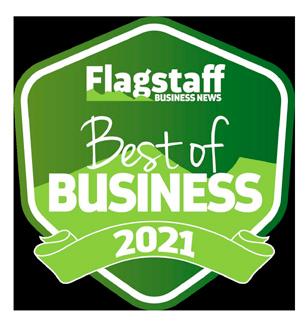
Side note: Quitting cold turkey can be dangerous if you’ve been drinking a lot, so consult a professional before ditching the booze.
The rate of prediabetes and diabetes has skyrocketed in both adults and children in the past three years! Of course, elevated blood sugar has a whole host of negative health impacts and the immune system is not excluded from the list. Elevated blood sugar sets off a dysfunctional immune response. High blood sugar can cause lower levels of natural killer cells, lower concentrations of protective cytokines (immune sig
naling chemicals), and lead to reduced white blood cell function. High blood sugar can also delay recovery from in fection. Elevated sugar and the insulin resistance that comes along with it are best treated by dietary changes, exercise and careful tracking of blood sugar. I prefer that my patients use a contin uous glucose monitor so that they know exactly how their food, drink and exercise impact their blood sugar.

Arabinogalactan, which is found in high amounts in the larch tree, has been shown to decrease the inci dence of colds in people who get sick frequently. It promotes healthy natural killer cell function, proper modulation of inflammatory and immune chemical signaling and improved macrophage (a type of white blood cell) function. Arabinogalactan also has a very strong role in gut-mediated immunity because it feeds good bacteria, suppresses pathogenic bacteria and fuels the cells of the colon to keep them healthy.
Quercetin, a bioflavonoid found in
fruits and vegetables, is one of my favorite allergy-busting supplements. The past three years have made me appreciate quercetin’s role in immune function, as well. Quercetin plays a role as an antiviral agent, inhibiting the ability of the virus to replicate in its early stages. It also helps immune function by assisting white blood cells and helping the immune system send signals properly to mount a healthy immune response. Quercetin also helps the immune powerhouse mineral zinc get into the cells!
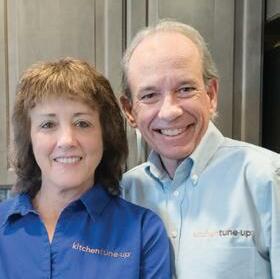
Many of us, rightfully so, think of turmeric as a go-to for its anti-inflam matory effects to reduce pain and other signs of inflammation. But turmeric – specifically, curcumin – also impacts the immune system through a modulating effect. This means that curcumin will assist in the promotion of T cells, B cells, natural killer cells, and other cells that promote a healthy immune response while down-regulating inter leukins and other inflammatory
chemicals that promote a hyperreactive immune response. A hyperreactive immune response can have detrimental effects on the person experiencing the immune response.
I hope this article, with its blend of lifestyle and supplement immune tips, helps you navigate fall and winter in a healthier manner. The stronger your immune system is, the faster you will recover from infection. We also know that people with strong immune systems carry lower viral loads and shed virus for a shorter period of time. Keeping yourself and your immune system healthy and strong helps you and it helps your community! FBN
Amber Belt, N.D. is a naturopathic physi cian and co-owner of Aspen Integrative Medical Center where she helps patients get healthy from the inside out. She is also co-owner of Sage Sirona, which focuses on natural first aid and education. Dr. Belt has been practicing naturopathic medicine for more than 15 years and can be contacted via as penmedcenter.com or sage sirona.com. You can also call her office at 928-213-5828.


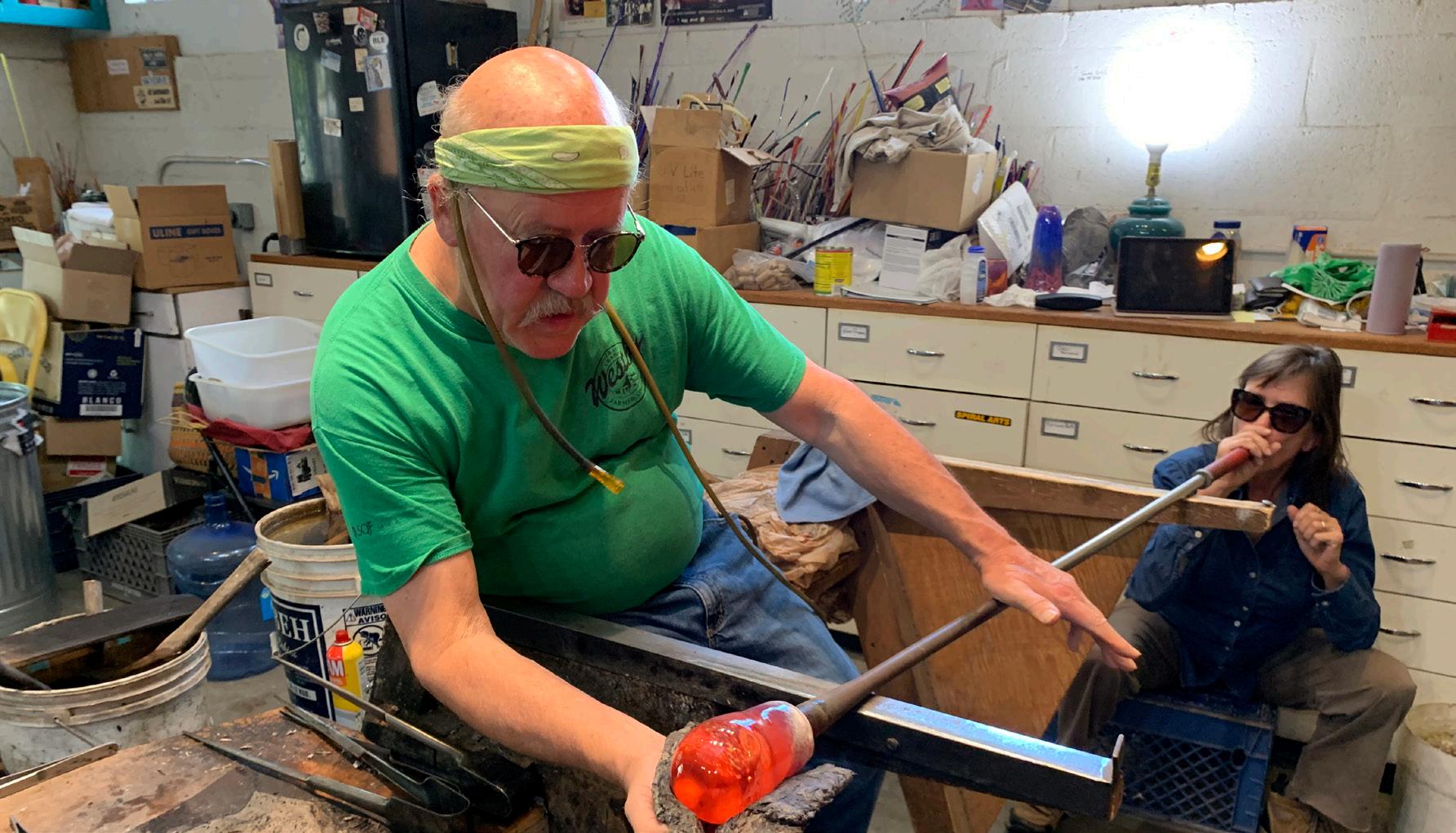
On a September morning, George Averbeck is in his Fire on the Mountain studio carefully crafting a glass-blown vase, inspired by the Milky Way and Flagstaff’s famous starry skies. His wife, business partner and glass-blowing assistant that day, Holly, joins him to create a deeply meaningful original art piece that will bring awareness to the town’s clear view into deep space and the conser vation efforts of the Flagstaff Dark Skies Coalition. On this morning, he announces how the sale of this vase will be a contribution to the Coalition and as a result, the protection of Flagstaff’s dark skies natural resource.
“I’m doing this for Chris,” said Aver beck, referring to Flagstaff Dark Skies Coalition President Chris Luginbuhl, as he carefully moves the glowing chunk of glass out of the 960-degree oven, waves it in the air and coaxes it into a vessel by turning it across a countertop. Averbeck’s friendship with Luginbuhl
goes back decades, as Luginbuhl argu ably has been Flagstaff’s most vigilant dark skies warrior and Averbeck has been a constant force bringing atten tion to the beauty of the night through his talent and his store.
“George and Holly are well-known pillars of the community, always willing to help,” said Lowell Observatory Historian Kevin Schindler. “George’s holiday ornament glass spheres sell in Lowell Observatory’s gift shop. He is famous for his popular ‘Blue Moons’ and ‘Pluto Balls’ that have become col lectibles in this town that values science and astronomy.”
Averbeck’s ornaments also are exhibited at the Museum of Northern Arizona and the Sedona Arts Center.

The glass-blowing process is a dance of sorts between the Averbecks. George expertly rolls the hot glowing glass across a pile of glass shards to create the swirling star cloud image of the Milky
Continued

Many of us who regularly carry a firearm in public (either concealed or in the open) have been asked why we would choose to do that. A recent survey found that 32% (81 million) of adults in this country own at least one firearm. More than half of them (56%) choose to carry one for personal defense. That begs the question, why would so many people, many of whom we know and trust, feel the need to live their lives armed?


Those who carry hear from some politicians and many in the media that having a firearm is irresponsible and may put others at risk. Some folks who see someone with a firearm feel alarmed and question the motivation.
Since 2010, anyone who can legally own a firearm in Arizona is also legally allowed to carry it either in the open or concealed. No additional permit is re quired. As a result, we don’t really know just how many folks we see every day are carrying a firearm, but some suggest it could be as many as one in 10.
So, what motivates all of these people to carry a firearm? Is there any benefit to being armed in public? What about the risks?
While motivations are likely wide ranging, some of the more common


reasons for carrying a firearm are these:

N People that are less able to defend themselves find that having a firearm can neutralize the advantage that a stronger/larger aggressor has over them.
N Some people believe the results of a prior negative experience would have been different if they had a firearm, so now they carry one.
N Some individuals simply live and/or work in an area prone to higher rates of violence and feel safer carrying a firearm.
What about the benefits? Does having a firearm actually provide you with any additional personal security?
That answer is a resounding yes. A Georgetown University study found that nearly a third of firearm owners have used a firearm in personal defense (including defensive display). The study further shows that a firearm is used 1.7 million times a year in person al defense. In almost all of these cases, no shots are fired and no one is injured. Simply displaying a firearm thwarts the attack. We also know that most mass shooting events end when someone with a firearm challenges the shooter. That is usually a law enforcement officer but the result is the same with an armed civilian.
OK, so we understand why folks


would carry and we know that carrying a firearm stops millions of crimes. What about risks to having an estimat ed 20.7 million concealed carriers out there? Are they dangerous to others around them? Actually, no. Concealed carriers are some of the most law-abid ing members of our society. It could even be argued that they are helping to protect others while assuming great responsibility at the same time. It’s a
safe bet that none of them ever want to have to use their firearm. If they do, there will be life-changing emotional, financial and legal consequences.
In conclusion, the next time you see someone carrying a firearm, realize that they are reasonably motivated, effective in being able to stop a crime from continuing and accepting huge responsibility that may just help to protect you, too. The next time you’re
standing in line at the grocery store and see someone carrying, instead of wondering why, just say thanks! FBN
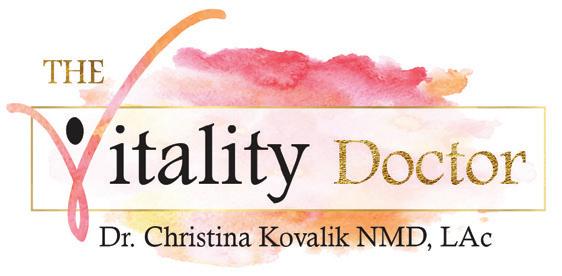
Rob Wilson is the owner (with his wife, Elise) of Timberline Firearms & Training in Flagstaff. They offer a full line of firearms, accessories, safes and ammunition along with Liberty Safes. For more information, visit timberlinefirearms.us.

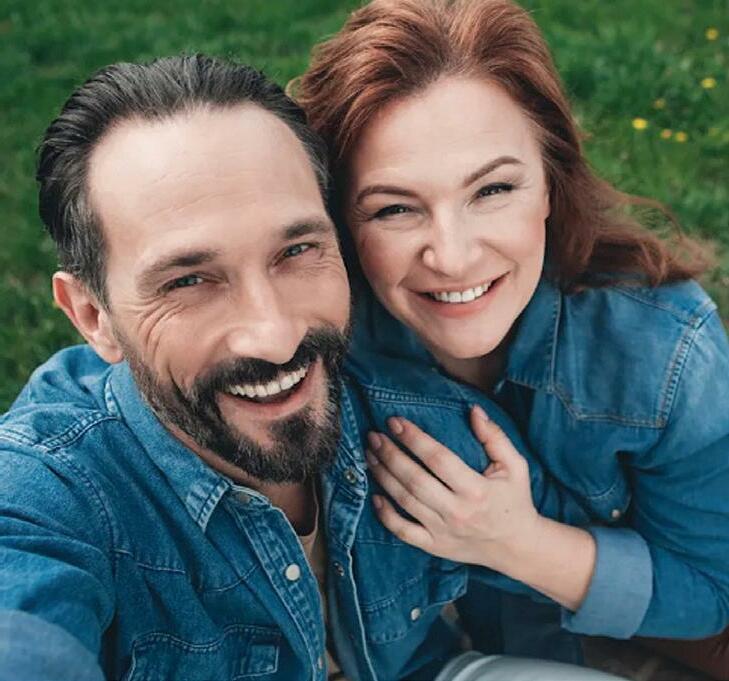
When we have a concern about our health, we often decide to see a physician. However, the process of choosing a physician can definitely be over whelming. It’s hard enough just to find a provider who even has avail ability when you need help. Getting an appointment quickly is often itself a challenge. We assume the physician will be knowledgeable and qualified. We assume they are practicing within the boundaries of the field in which they were trained and certified. But do we really think about it? Who has time to research and investigate a health care professional’s qualifica tions?
Many people start with their pri mary care doctor, whom they know
and trust for treatment and guidance. A good number of us, though, do not have a family physician, so we do a Google search, or rely on word of mouth or advertising. Whatever method we employ to find a health care provider, we usually take it for granted that the person will know what they are talking about, and will know what they are doing with respect to diagnosing and treating our problem.
Regarding physicians, is he or she actually Board Certified? What does “Board Certified” even mean?
The Accreditation Council for Grad uate Medical Education accredits residency programs. Four years of medical school bestows the M.D. de gree, after which acceptance into an accredited residency is necessary to obtain intensive, in-depth, on-the-job
//
Ideally, we all would like to feel confident that our provider meets nationally recognized standards for education, knowledge, experience and has advanced skills to provide high-quality care. In other words, we want to know if they are Board Certified. And that’s why certification exists.
//

training within a specific branch of medicine. Residency programs last up to seven years. Thus, specialists train for up to 11 years after university.
For physicians, Board Certified means:
N Completed specialized training in an accredited residency program.
N Passed comprehensive exams demonstrating knowledge and the ability to apply that knowledge to treat patients.
N Made a commitment to stay cur rent on advances by participating in ongoing certification activities and assessments throughout their careers.
Ideally, we all would like to feel confident that our provider meets nationally recognized standards for education, knowledge, experience and has advanced skills to provide high-quality care. In other words, we want to know if they are Board Certified. And that’s why certification exists.
You might be disturbed to know that board certification is not required in order to hang a shingle claiming specialization in a field of medicine, a loophole exploited by a few unethical, unqualified providers. Deceiving the public has become rou
tine practice in the world today, but when it comes to the practice of med icine, it’s unconscionable. When you need help, who would you choose a fake specialist or a real specialist?
The Hippocratic Oath describes how physicians are expected to uphold professional ethical standards. One who intentionally misleads a patient by implying they are a certified spe cialist when they are not, is a fraud.
But how do we verify a health care provider’s credentials? How do we avoid being treated by someone who masquerades as an expert? Thank fully, the vast majority of health care professionals practice honestly after receiving legitimate training. Further more, the vast majority of the general public does care about the qualifica tions of their health care providers. Board certification can be verified easily. In seconds, anyone can verify a doctor’s certification using websites such as https://www.certificationmat ters.org, https://findado.osteopathic. org, or just search “American Board of (insert medical specialty).” You can also call the doctor’s office and ask where they did their residency.
Bottom line: When you’re spending your hardearned money and scarce time
to see a medical provider, especially a specialist, do your homework. Mis diagnoses and unnecessary, unsafe treatments by self-proclaimed experts can wreak havoc on your body and pocketbook. Take a few minutes to find out if they have residency training in the field, and verify their board certification. Your good health depends on it!
FBN
Scott Dale, M.D., received his doctorate in 1998 from the University of Chicago Pritz ker School of Medicine. Dr. Dale completed dermatology residency at The University of Chicago Hospitals. He is Board Certified by the American Board of Dermatology, a member of the American Society for Mohs Surgery and American Society for Dermatologic Surgery, and a fellow in the American Academy of Dermatology. Dr. Dale has been practicing medical, surgical and cosmetic dermatology, including Mohs Micrographic Surgery, at Northern Arizona Dermatology Center (www.nazderm.com) since graduating from the University of Chicago in 2002.
Northern Arizona Dermatology Center, PC 1490 N Turquoise Dr. Flagstaff, AZ 86001 928-774-5074 ext 239



Anxiety and stress are common symptoms that I regularly see in my practice. Many people are dealing with some huge finan cial pressures, relationships that are stressful, or a lack of supportive relationships. Some are dealing with personal, family or friends’ health issues that are affecting their mental health. Often these issues may spill over into your work and home life and can greatly affect the mental and emotional side of your self (mind, body and spirit).
On top of the day-to-day stresses that people endure, these days, so many people are dealing with the post-COVID stress cascade that has been affecting people for the last twoand-a-half years. It has created a rip ple effect that I feel will be lasting for years to come. It is challenging to see how the first year of lockdown will affect school-aged kids. I have seen a huge increase in anxiety, depression, stress, sleep issues and fatigue as a result of the pandemic in kids and adults. I am certain that research will be coming out in the next years
proving that fact.
The spiral of the pandemic cascade started with an initial spike of uncertainty, stress and worry for people’s safety, low food rations or availability, worry about work, some have lost jobs, income, etc. Many were forced to pivot and find other ways to survive. The school-aged kids were thrown out of school and forced to be online with little to no personal interaction. Mentally, this was severe ly detrimental to the mental health of these kids and the teachers. We did what we had to do to survive.
The survival mode taxes the adrenal glands by increasing cortisol levels, a hormone released in times of stress. The consistent rise of cortisol produces an increased heart rate, anxiety, tension and stress. If cortisol is too high, people often have trouble sleeping, feel anxious, experience the mind racing at night, have heart pal pitations, face weight challenges and hormone imbalance of neurotrans mitters and male/female hormones.
The adrenals are like the source ener gy of other endocrine glands. When they are out of balance, the effect can disrupt the thyroid, male or female
hormones, and the pancreas, creating blood sugar imbalances.
N Head: Over-thinking or over-an alyzing, mind fog, forgetfulness, headaches, trouble sleeping, hair loss or thinning, neck or back tension.
N Chest: Shortness of breath, palpi tations, chest tightness, can’t catch your breath.
N Stomach: Nervous knots, stomach pain, diarrhea, constipation, gas, bloating, discomfort, acid reflux.
N Body: Pain and muscle tightness or tension can be an indicator of stress and anxiety in the body.
N Women: Irregular cycles, weight gain, hot flashes, night sweats or sleep issues.

N Men: Weight gain, low libido, erec tile issues, night sweats or trouble sleeping.
Focus on being mindful and present. Buddhist monks focus on mindful ness. Bringing focused attention to daily activities is a way to be present in the moment. It can be like a
meditative state, like washing dishes, digging in the garden, walking and paying attention to each step and focusing on absorbing your sur roundings.
Look for healthy ways to help you deal with stress. Move more often than not. Exercise regularly. HIIT (high intensity interval training) for 20 minutes, three times per week has been shown to reduce stress and bal ance hormones. Spend time outdoors hiking, walking, kayaking or running to reconnect and let go of stress and anxiety. Maybe take an Epsom salt bath to let go of your worries. Journaling can also help you make connections with yourself and gain clarity on the situation at hand.
Maintain healthy eating habits. So many people overeat, eat the wrong things or overindulge in alcohol when they are stressed. Research shows that eating and maintaining a Mediterra nean diet with vegetables, protein and good fats will put less stress on the body systems and adrenals.
Focus on your breathing. When you start to feel overwhelmed, anx ious or stressed, take a few minutes to Continued on page 35
On top of the day-today stresses that people endure, these days, so many people are dealing with the post-COVID stress cascade that has been affecting people for the last two-and-ahalf years. It has created a ripple effect that I feel will be lasting for years to come. It is challenging to see how the first year of lockdown will affect school-aged kids. I have seen a huge increase in anxiety, depression, stress, sleep issues and fatigue as a result of the pandemic in kids and adults.
NACA’s Community Devel opment Department believes in the philosophy that all people are connected. They utilize holistic approaches to help guests and patients attain balance, harmony, growth and resilience. The Commu nity Development team recognizes the strength of the community and uses those voices to honor and foster wellness. Their work is to support relationships compassionately and proactively with kin, collective cul tures and the environment. Through partnership and collaboration, the Community Development team strives to improve the well-being of patients, assist in healing and focus on building community capacity.
The programs under the Com munity Development Department include:
Supportive Services
Connections
Economic Development
Each program has a unique popu lation focus and service approaches.
In the Supportive Services program, the staff focuses on offering various direct or coordi
nated supports to aid individuals or families in meeting their overall social well-being, with financial or supportive services. These approach es can include referrals, or case managers reaching out to partners to alleviate the individual’s or families’ current need(s). At this time, the Supportive Services team, along with various community volunteers, have committed to conducting a Rapid Assessment, Response and Evalua tion (RARE) Assessment to identify areas of opportunity to better serve the Indigenous unsheltered relative population in the Flagstaff area. This assessment is in partnership with the City of Flagstaff and is currently in the analysis stage of looking over sur veys, interviews and focus groups that will supplement the final report. The information will be distributed across partners and the community, so as to utilize a better approach toward Flagstaff’s unsheltered relatives.
The Reach UR Life (RUL) Suicide Prevention program offers free trainings on topic areas related to suicide prevention and working with individuals in that vulnerable state. The RUL team also provides technical assistance to youth-serving agencies, schools and other organiza tions in the system of care for youth.
The initiative for this program is to create a suicide-safer community in the Flagstaff area. The program offers culturally-based workshops and a pathway to healing, for ages 10-24, to ensure youth in the community receive the care they need and do not “fall between the cracks.”
The Pathways youth program is an after-school program housed at Puente De Hozhó every Monday through Thursday. The program’s focus is substance use prevention and tobacco cessation, tailored for Native American youth and their families. Pathways’ use of a culturally-based curriculum brings a unique perspec tive to substance use prevention and creates successful opportunities for those youth.
The Native Connections program implements youth guided program ming to reduce suicidal behavior, substance use and some impacts of trauma, all while promoting mental health well-being among Native American youth up to 24 years of age. The program also focuses on improving the local mental health/ behavioral health system by partici pating in various coalitions to address issues such as social justice, inequality and systemic racism, as it appears currently.
Finally, the Economic Develop ment program currently operates a vendor program where Indigenous artisans and buyers can learn to market their wares. The project creates a unique opportunity for Native American vendors to enhance and develop their economic self-suf ficiency and lessen public assistance dependency. As a result of being a part of this program, vendors have gained dignity, self-worth, economic empowerment and renewed pride in themselves. For many of the families, the artists are multi-generational. By creating economic development opportunities at the individual level, the Economic Development program empowers individuals to seize control over their financial, social and health circumstances. There are 250 Native American vendors in the program who showcase and sell their au thentic and beautiful arts and crafts. NACA works in partnership with the Coconino National Forest to oversee vendors at the Oak Creek Overlook Vista and provide high quality authentic Native American crafts.
The Community De velopment department strives each day to better the Flagstaff community, with a




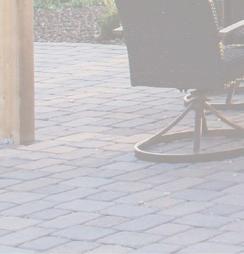





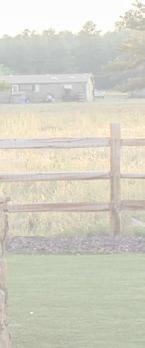







focus on NACA’s mission, values and Indigenous approaches, to enhance advocacy for vulnerable populations or those underserved. The impact the Community Development team makes each day through financial as sistance, referrals, trainings, presenta tions, cultural activities, collaborative events, vending, outreach booths, surveys and interviews, has no num ber attached, but has a substantial ripple effect that continues to grow throughout the community. FBN
For more information on upcoming events or to learn more about the Community Development department, please visit https://nacainc.org/community-develop ment/. NACA’s Family Health Center cur rently offers the flu vaccine, as well as the COVID-19 vaccines and COVID-19 bivalent booster. For more information or to sched ule an appointment, call 928-773-1245.

Jacelyn Salabye, MSW, Dine’ (Navajo), is Kiyaa’aanii-Towering House Clan born for Naashgezii Tabaaha-Zuni People of the Red-Running-Into-the-Water Clan.
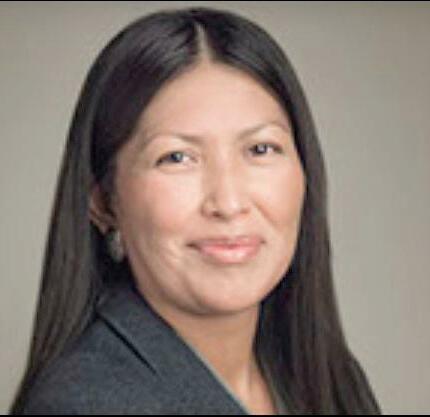
Salabye is the NACA Community Development director, has been a social worker for 15 years, and holds a master’s degree from Arizona State University in social work.
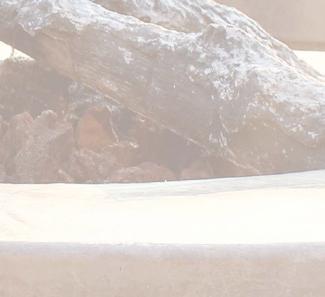
With Halloween approaching, it seems like there are many things coming up to scare us: prices and rates and market shift, oh my! With the real estate market and economy going through changes, how do we sift through the jump scares and find the facts? If you’ve been worried about the housing mar ket crashing, this is the article for you.
In Flagstaff, home prices increased by 16% in 2020 and 24% in 2019. Why did home prices increase by unprecedented amounts? Following the quarantine, the country went through a collective life change and started to value where they live more, especially as remote work grew in necessity and popularity. Currently, Flagstaff home prices are projected to be up 18% this year. However, it is predicted that home prices will start to regulate toward the average increase for residential single-family homes in 2023.
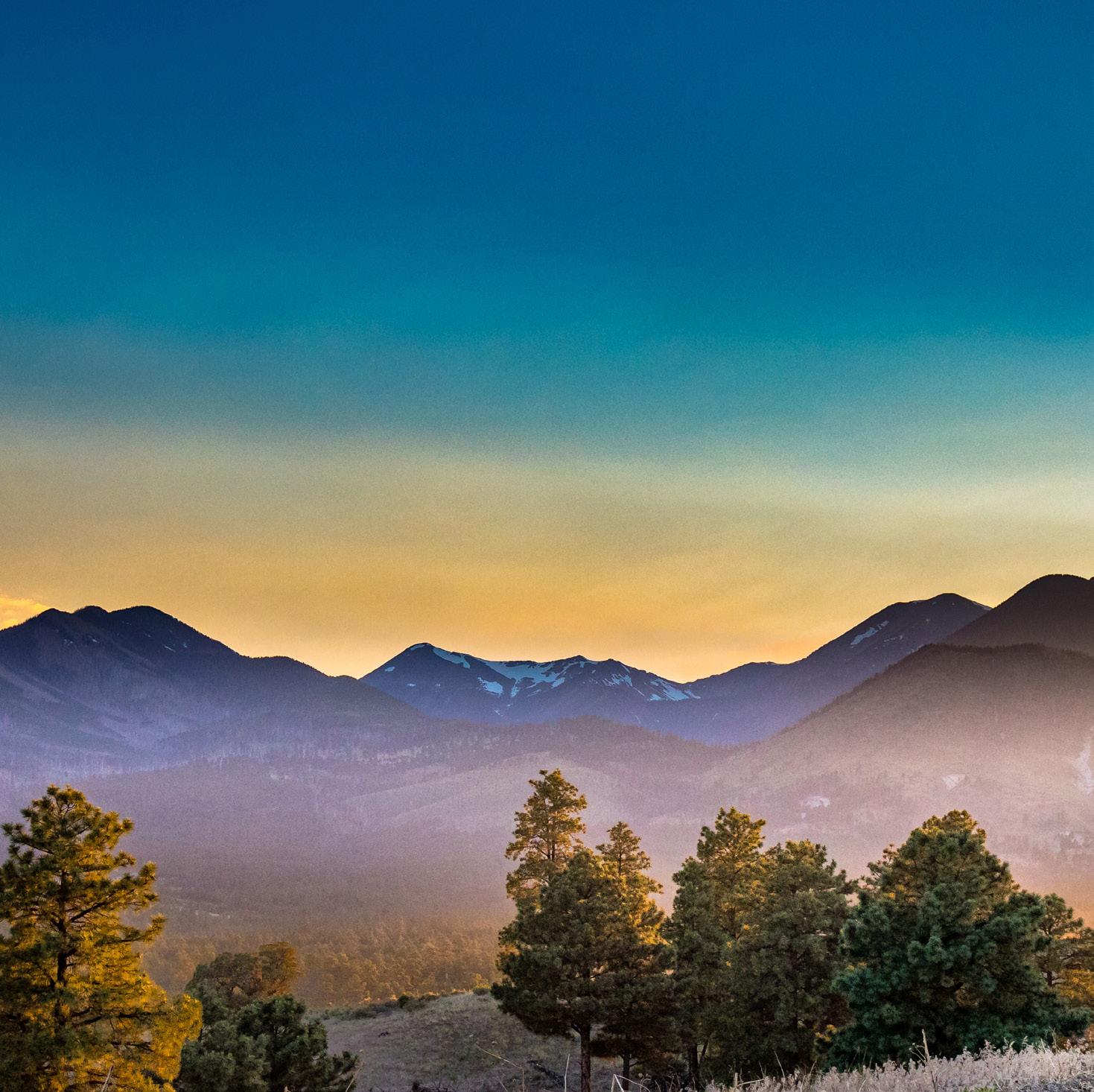

What you will notice in our cur rent market is that homes are staying on the market longer than they were last year. Supply and demand is what drives home prices. When there are more homes (supply) than there are
active buyers (demand), home prices go down. Inversely, thinking back to 2020, there were many active buyers and not enough homes to go around. In that case, we saw multiple offers and buyers paying more than ap praisal prices. This drew many sellers to place their home on the market in
the hopes of taking advantage of the high sales prices.
But, are we back to 2008? Should we be anticipating a housing crash? There are key differences between now and 2008. Nationally in 2008, demand for homes dropped dramati cally, with supply being four times the

amount that we have now in 2022.
In Flagstaff, compared to 2008, in ventory has increased by 927, to 1,021 homes, but the number of households has increased from 46,715 to 52,653. With an increase of more than 6,000 households in Flagstaff, having
an additional 100 homes available still means there are too many buyers chasing too few houses.
As of September, the Federal Reserve Board (the Fed) has increased their policy rates by 0.75% and has indicated that they plan to continue raising rates to tame inflation. While the Fed con trols the federal funds rate and discount rate, the market forces have influence on mortgage rates, too. In anticipation of the Fed changes, mortgage rates have already risen. While we’re not looking at 17% interest rates like in the 80s, it is changing the buyer pool, including, but not limited to, purchasing power, being more particular in home choice, and not being willing to pay 2020 prices in 2022.

If you are looking to sell your home or buy your next one, working with a real estate professional who can guide you through the process and keep you informed about chang es to the market will be vital to your success.
FBN
Alana Bateman is a REALTOR® at Russ Lyon Sotheby’s International Realty. She can be reached at Alana. Bateman@RussLyon.com or 520-301-8337.

focus on your breathing. Inhale for a count of eight; exhale for a count of 16. You can also inhale deeply and in your mind inhale peace, exhale calm. Repeat for a couple of minutes. You can close your eyes or do it any time you feel stress. There are some great meditation apps that have guided meditations or may contain binaural beats to help to retrain your brain and nervous system to relax.

Lean on your support systems. Talk with family, friends or health professionals to help you gain clarity and work through any stressors. If you don’t have someone, you can access some great online support groups or look for a mental health professional to guide you through.
Consider acupuncture and natural



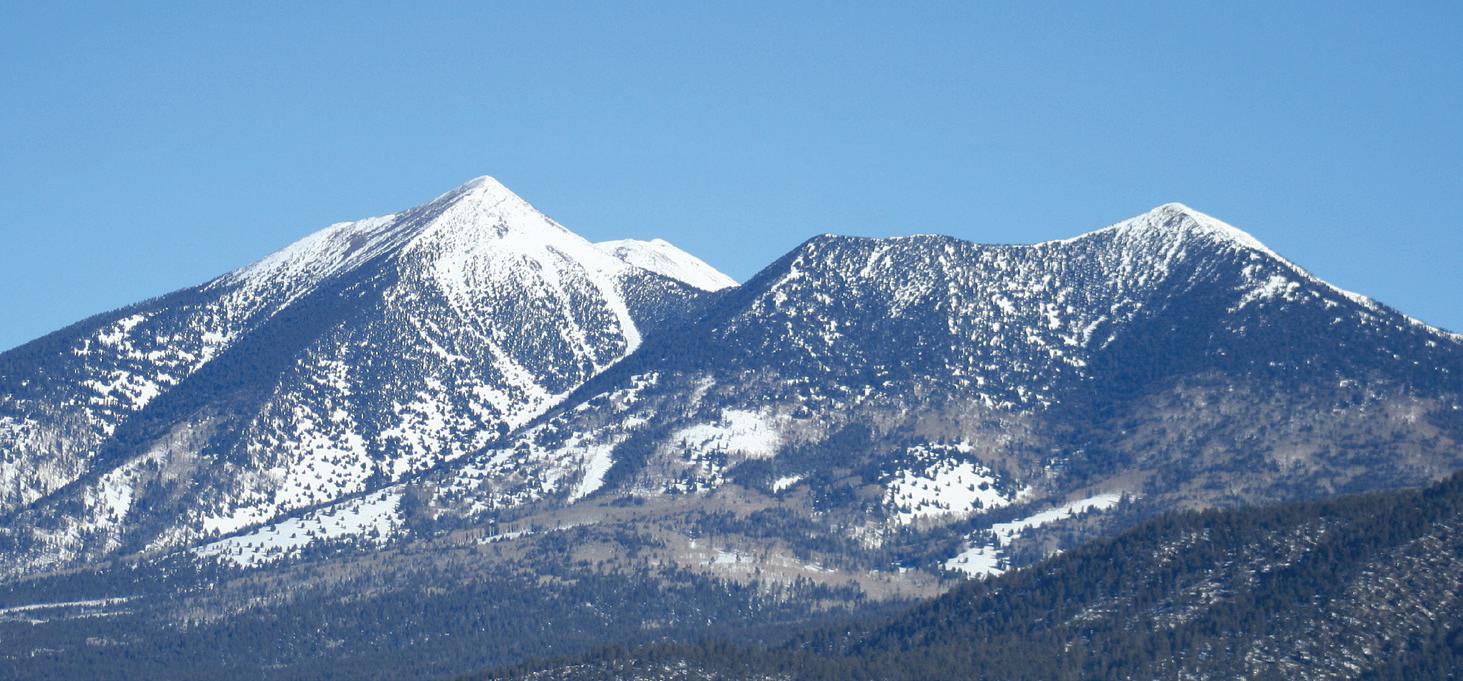
medicine. They offer an array of treatments to help reduce the stress response, reduce anxiety and balance hormones by looking to the root cause of the anxiety and treating it naturally. Acupuncture has a balanc ing effect, releasing the natural en dorphins that make you feel good. It also balances hormones, neurotrans mitters and the body’s response to stress-reducing symptoms.
Create a healthy nighttime ritual. Many people are too bombarded by social media, TV and increased screen time. That light decreases mel atonin production and can affect the quality of sleep and mood. There are many blue light features on devices that you can implement or you can download the app to apply the blue light at a certain hour, such as one



hour before bedtime. Sleeping in total darkness can also be very helpful.
Try some calming supplements and herbs. Chamomile and lemon balm tea before bed can help reduce tension. Glycine 500-1000mg one to three times a day helps to reduce anxiety without making you tired.
Ashwaganda is a great adaptogenic herb that can help calm the nervous system and boost the adrenals. Slowly released melatonin, 1mg- 100mg, titrated to the best effective dose, is a great antioxidant. It is non-habit forming and helps improve sleep quality. Lavender essential oil is great for relaxation and improves sleep quality.
Get help. If you are not able to manage anxiety and stress and it feels so overwhelming to you, seek







help from a professional. Consider getting your hormones, vitamins and neurotransmitters tested before resorting to medication right away. If medications are needed to manage anxiety, there are many natural options that work synergistically with them to support your nervous and adrenal systems. If one of your goals is to not be on anxiety medications for the long term, natural medicine offers a buffer to weaning off safely. In all cases, it is important to treat the root cause and balance it naturally first. FBN

Dr. Christina Kovalik NMD, LAc, The Vitality Doctor, is a naturopathic physician and acupuncturist specializing in hormone op timization, optimal health and vitality. She is a new Flagstaff resident, practicing since 2004, and opened her second location in Doney Park in 2020. For more information, visit thevitalitydoctor.com or call 928-863-6086.


n Nov. 8, 2016, the voters of Flagstaff wrote and passed The Minimum Wage Act (“the Act”) as a citizen’s initiative (Proposition 414). The Act, which is codified in Title 15 of the Flagstaff City Code, prescribes that begin ning in 2023, the Flagstaff minimum wage shall be increased annually by the increase in the cost of living.
Pursuant to the Act, “the increase in the cost of living shall be measured by the percentage increase as of August of the immediately preceding year over the level as of August of the previous year of the consumer price index (all urban consumers, U.S. city average for all items)” (15-01-001-0003(B)). The increase shall be rounded to the nearest $0.05.
On Sept. 13, 2022, the U.S. Bureau of Labor Statistics released the consumer price index (CPI) numbers for August of 2022. The CPI for August 2022 (296.171) was 8.3% greater than for August 2021 (273.567). Accordingly, as of Jan. 1, 2023, the minimum wage in the City of Flag staff will increase from $15.50 per hour to
$16.80 per hour.
The Flagstaff minimum wage applies to all employees who work or are expected to work at least 25 hours within the city limits in a single calendar year. For provisions of the Act pertaining to tipped employees, please refer to section 15-01-001-0003(E) of the Flagstaff City Code.

The Act is enforced by the Flagstaff Office of Labor Standards. Previously enacted provisions of Title 15 will remain in effect. These include requirements that employers maintain payroll records for a period of four years, allow the Office of Labor Standards to review these records to monitor compliance, and do not retaliate in any way against employees for asserting their rights under this law.

FBN
For any questions or inquiries regarding the Flagstaff Minimum Wage, please contact Chris W. Rhode, management analyst, at Labor Standards@flagstaffaz.gov or 928-213-2078. Additional information and resources can also be found at flagstaff.az.gov/MinWage
The third in a statewide series of storytelling events examining affordable housing chal lenges focuses on Flagstaff this month.
“Arizona Storytellers Presents: Finding Home” showcases tales from the front lines of Coconino County’s housing crisis. Flagstaff’s recent attempts at short- and long-term solutions will also be ex plored. Additionally, non-profits working on relief will be featured.
The event is sponsored by Flagstaff Business News, KNAU, the Arizona Community Founda tion of Flagstaff, The Arizona Republic and ASU’s Morrison Institute of Public Policy. The affordable housing-themed storytelling series kicked off in Yuma earlier this year. A metro Phoenix event was held in August. In Flagstaff, the event will examine how spiraling rent and home costs contribute to housing shortages and a growing homeless popu lation.
The free event is 7 p.m., Wednesday, Oct. 26, at the Coconino Center for the Arts.

“Housing insecurity is one of Arizona’s most pressing issues, and we need to create spaces where we can talk about how to ease the crisis,” said An drea Whitsett, executive director of ASU’s Morri son Institute, which has conducted a seven-county study of the issue.
ACF of Flagstaff has created the Northern
Arizona Housing Fund to support non-profits working to provide relief for those facing affordable housing challenges. “Finding Home” will feature storytellers from several of those groups, including Catholic Charities of Flagstaff, Habitat for Human ity of Northern Arizona and Housing Solutions of Northern Arizona.
A panel moderated by FBN editor Bonnie Ste vens will include: N Salsa Brava and Fat Olives owner John Conley, who will represent the hospitality industry; N Flagstaff Unified School District Superintendent Mike Penca, who will talk about the challenges of hiring and retaining teachers; and N Devonna McLaughlin with Housing Solutions of Northern Arizona, who will discuss highlights of the city’s 10-year plan.
To learn more about ACF-Flagstaff’s housing fund and other efforts, go to: https://www.azfoun dation.org/Give-Where-You-Live/Flagstaff.
Doors open at 6:30 p.m. for the evening of storytelling, conversation and community building around housing challenges in Flagstaff. Tickets are free but reservations are required, as seating is limited. For tickets, go to: https://storytellersproject. enmotive.com/events/register/finding-home-flag staff. FBN
By Terry BakerOnce the site of the Southwest Forest Industries logging camp, it now hosts campers escaping the Valley heat and busyness of the city, hunters gathering for a warm meal and a game of cards around a massive wood-burning fireplace, and neighboring community members wanting to two-step on a Saturday night to the music of a live country band.
“We’ve been told that we receive more mail here than the U.S. Post Office at Clints Well!” said Pendergast, a retired Glendale police officer, who specialized in emergency management.
“This has become an important gather ing center. People count on us.”
As has been the case since nearly the
start of the pandemic, the demand for outdoor recreation and the human need to be in the woods has surged. Coconino National Forest Recreation Manager Brian Poturalski says that’s a trend that shows no sign of slowing down.

“The sheer number of people who want to be in Arizona’s high elevation forests has increased dramatically in the last two-and-a-half years,” he said. “It’s a significant impact because a lot of the folks we are seeing now did not grow up camping in the woods. They want to do the right thing and be good stewards of the land, but they may not know what that means.”
He says privately owned recreation sites like Happy Jack Lodge and RV fill an important void by providing
cabins, RV sites and facilities to accept trash, along with a dumping station for sewage. Happy Jack Lodge also answers emergency calls around the clock.
“It feels like a lot of people, postCOVID, are looking for those devel oped recreation sites where they can feel safe and comfortable,” said Potural ski. “They enjoy being near others and having the amenities and infrastructure provided at these sites.”
Pendergast says Happy Jack guests are very sociable and treat the property as if it were their own home. “When a place shows respect for its surround ings, like keeping the lawn mowed, having no trash on the ground, and maintaining clean, freshly painted and smoothly operating facilities, others follow that behavior.”
In the early 2000s, Happy Valley Lodge owner Michael Mongini, a partner in the Flagstaff law firm Hufford, Horstman, Mongini, Parnell and Tucker P.C., initiated a land exchange with the Coconino National Forest. He traded 820 acres of an in holding characterized by plateaus of ponderosa pine forest, bisected by a scenic canyon with nearly two linear miles of East Clear Creek frontage. In return, the Forest Service traded approximately 500 acres of Forest Service land adjacent to Happy Jack Lodge.
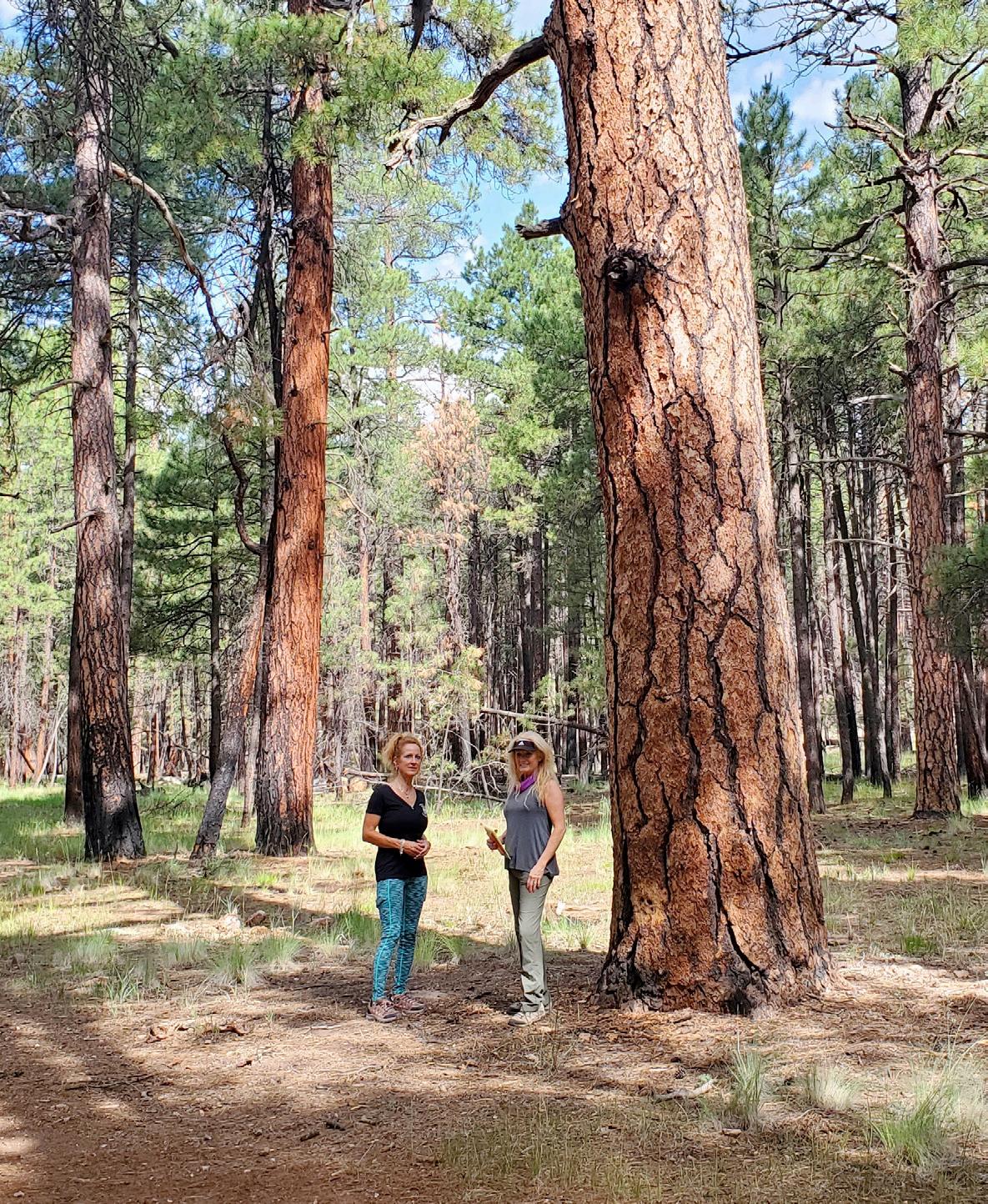

“It was important to me that the Clear Creek land be part of the Nation al Forest. The trade was consistent with the goals of the Coconino National Forest Management Plan, as they don’t want ‘islands’ of private land surround ed by National Forest,” said Mongini. “And that was an easy decision for me, as well. That riparian area needed to belong to the Forest Service and the land next to Happy Jack would fit the site’s business plan.”
As stated in the land exchange documents, “Following completion of the land exchange (September 19, 2008) the Happy Jack Property now serves the original intent anticipated by Coconino County, the Coconino Na tional Forest: 1) The needs of a growing
regional population are accommodat ed with commercial and residential development, ii) County services are more concentrated, iii) impacts to the surrounding National Forest substan tially reduced. Visitors have a safe and aesthetically pleasing location in Happy Jack Lodge to congregate, park their recreational vehicles and enjoy the Na tional Forest, rather than utilizing the same recreational vehicles for remote vehicular camping.”
Currently, Mongini is working with the County Planning and Zoning Di vision to rezone the parcel and expand the Happy Jack Lodge operation by 250 RV sites, for a total of 650 sites.
“This gives us the opportunity to share this beautiful area with more peo ple from the Valley and elsewhere. We are set up to manage the recreational impact and influence behavior while providing support to both the Forest Service and recreationists,” he said.
“The people who work here are won derful ambassadors who love the forest and truly enjoy welcoming and helping visitors. They also promote Forest Ser vice etiquette and help educate people about the natural surroundings.”
Mongini, part of multi-generational Arizona family, also feels good about preserving a part of Arizona history that played a key role in the develop ment of Flagstaff. “We’ve been able to recycle, re-use and rehabilitate buildings and 2’ x 6’ boards from the forest logging companies that used this site.”
Retired Coconino National Forest Ranger Bruce Greco spent eight years managing the Happy Jack Ranger Station, a few miles northwest of Happy Jack Lodge. “Mormon pioneers brought in a sawmill. They first used it to build a temple in St. George, Utah, in the late 1800s and then dismantled it and moved it to Mormon Lake to supply all the communities along the Little Colorado River with lumber. In those days, lumber was transported by wagons pulled by oxen. They produced quite a bit of lumber for the early start
of Flagstaff.”
The area was known as Long Valley then and was the only way to get over the Mogollon Rim from Winslow to Strawberry, Pine, Payson and the Phoe nix area. In the early 1900s, the Forest Service established the Long Valley Ranger Station.
Meanwhile, miners were testing for manganese iron ore around the region.
“The same thing was happening at Happy Jack. Manganese mining claims were filed, pits were dug by hand, but no one ever really developed them,” said Greco.
After World War II, a surplus of army vehicles with rubber tires was a welcomed addition to the logging scene. “That’s when logging really boomed here,” said Greco. “Loggers converted the vehicles to logging trucks.”
In the early 1950s, the Saginaw and Manistee Lumber Company brought in logging trains, equipment and employ ees to Flagstaff, about 40 miles north west of Happy Jack. Logging families stayed in the lumber camp at Happy Jack. “Life was very difficult for people there,” he said. “There would have been upwards of 500 people – we’re talking about a land base of only five or six acres. There would have been very little privacy. But they had a spring for water and hunting was a big deal.”
The company was absorbed by Southwest Lumber Mills, according to sources that cite Northern Arizona University Cline Library Special Collec tions and Archives. Southwest Lumber Mills was acquired by Stone Container Company in 1987 and renamed South west Forest Industries in 1989.
“The natural beauty of the rim, the unique ecosystem, the wildlife and nearby Wilderness of West Clear Creek and Fossil Springs have brought people here since the 1800s,” said Greco.
“Happy Jack Lodge continues that unique American West experience of fering the solitude, serenity and beauty that people have long been seeking.
“It’s a special place,” said Mongini.
“We feel really good about inviting people into the woods, where they can connect with nature.
 By Bonnie Stevens, FBN
By Bonnie Stevens, FBN
Following unprecedented mea sures taken by Babbitt Ranches to protect a golden eagle nest, the Arizona Game and Fish Depart ment reports double success. A pair of eagles that had not been highly successful in producing babies in the last 10 years, delivered twins in late spring.
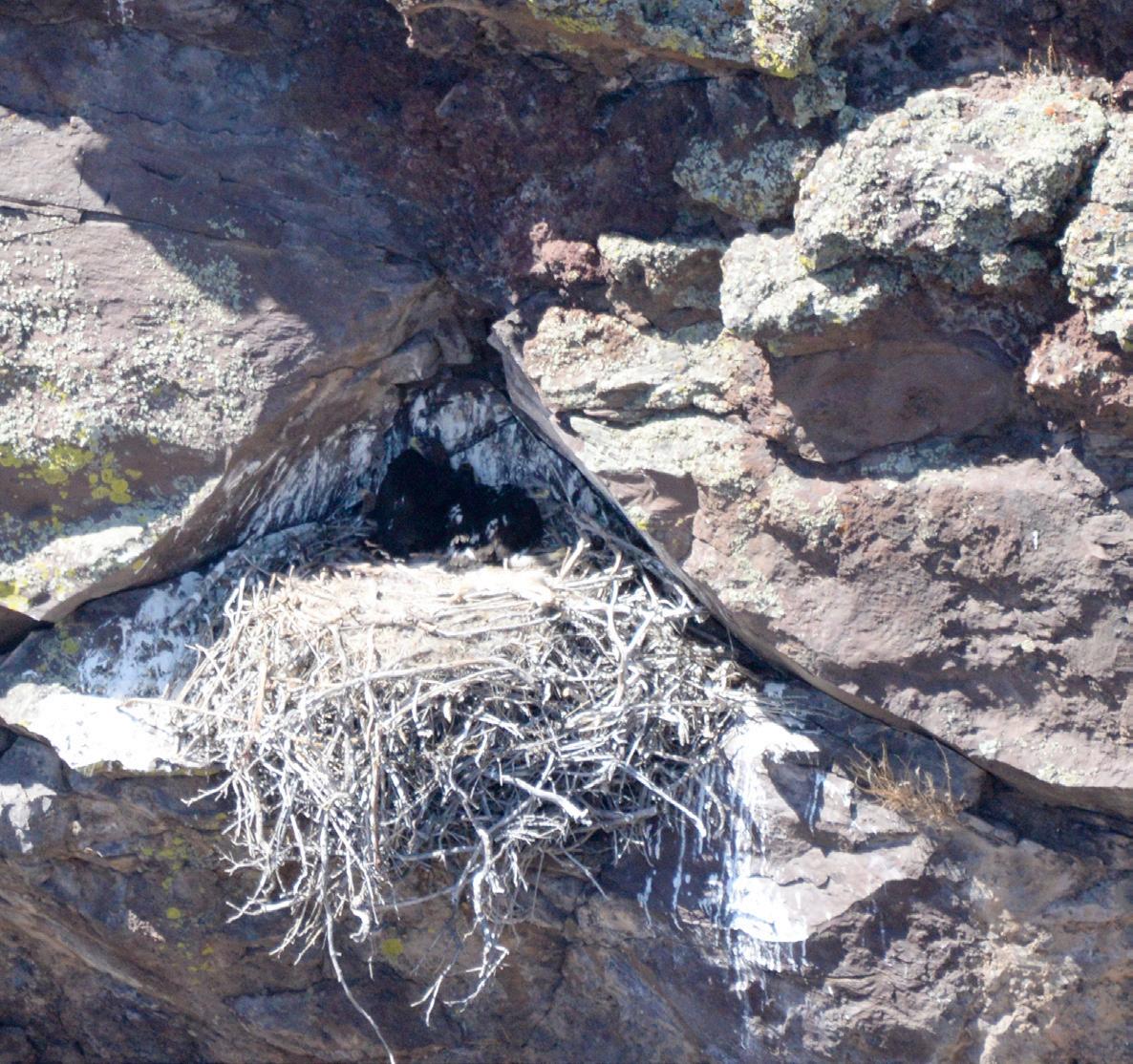
“This is very exciting,” said Kenneth “Tuk” Jacobson, raptor management coordinator for the AZGFD. “Seeing that they produced two eaglets, after the Babbitt Ranch es Landsward Foundation had just implemented a handful of measures to try to help them out, is very grati fying.”
The young eagles were discovered by an AZGFD helicopter crew con ducting surveys. “Billy Cordasco and the Landsward Foundation had been concerned previously about the num ber of hikers in the eagle territory. If this recreation impact kept going, we were all concerned we would lose the nest.”

Jacobson says the twins have been seen flying, which occurs around
nine to 10 weeks after they hatch. “As fledglings, they stay in the breeding area – about a two mile radius – to learn how to survive and hunt from their parents, usually up until Octo ber.”
From January through May, Babbitt Ranches had protected that two-mile radius, known as the SP Crater Golden Eagle Conservation Complex (SPEC). During that time, it was off limits to all recreationists, including hunters, hikers and UTV users. The special rules were creat ed through a unique conservation stewardship agreement between the Landsward Foundation and AZGFD, which strictly banned target shoot ing, hunting, trapping and any other method of taking small game animals, and the use of lead bullets.
“On behalf of the Babbitt family and the entire Babbitt Ranches com munity, we are so thrilled to report this wildlife success!” said President and General Manager Billy Cordasco.

The conservation framework that was put together to test on the SP Crater Golden Eagle Conservation Complex was designed to improve productivity, but there was no docu
mentation, no direct observable proof available to show that this approach would work,” said Jacobson
AZGFD research findings reveal that golden eagle pairs will abandon their eggs if they feel threatened.
“Productivity rates are definitely low in Arizona. We are still crunching the numbers from last season, but there weren’t a lot of active, successful breeding areas this year because of factors such as the prolonged drought, rabbit hemorrhagic disease and limit ed prey resources,” said Jacobson.

In all of the breeding areas across Arizona that have been tracked by AZGFD, only about a quarter of them produced two eaglets. “Nine percent produced three young, which is exceedingly rare,” he said.
Babbitt Ranches has been monitor ing golden eagles across the 750,000acre ranch for more than a decade. The golden eagle pair in the SP Crater area has been together for at least that long. During that time, the only other year it produced an eaglet was in 2018.
The SP Crater Golden Eagle Conservation Complex rules will remain in place from January through




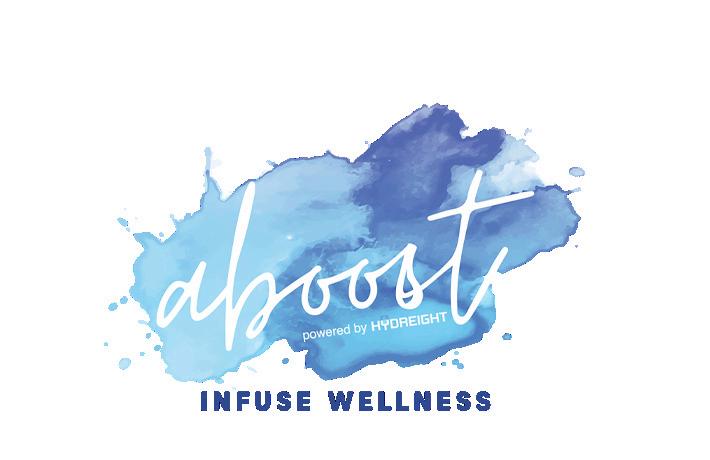
tion occurring. They have high unemployment, as well as a lack of infrastructure. And we felt that Navajo Power was a necessity in order to address these issues from the private sector.”
The Navajo Power endeavor was started in 2018 by Isaac and Dan Rosen, in partnership with Tony Skrelunas, former director of economic development for the Navajo Nation, and Joshua Finn, a solar finance professional.
“Dan and I were the two original founders,” Isaac said. “Dan, being a Jewish kid from New Jersey, and myself, being Navajo, really saw a need for a different type of development. And we had previously been involved in the energy industry in different segments; Dan being in residential finance and myself being in off-grid and community-based solar. So, we are really born out of the Navajo Nation and in response to the closure of the Navajo Generating Station.”
Isaac added that Rosen is a co-founder and former CEO of Mosaic, which has now provided more than $10 billion in loans for residential solar deployment across the United States.
Currently, Navajo Power has projects under development with tribal partners in multiple states, including New Mexico,
Arizona, California and Oregon.
“We have plans of expanding into other parts,” Isaac noted. “Our team members are predominantly virtual. We have team members on the East Coast, West Coast, in Arizona, on the Na vajo Nation, as well as in Mexico City. So, we’re really building this team to bring together the best talent from around North America, in addressing some of the largest challenges that indigenous communities are facing with this transition.”


There are strong reasons for basing Navajo Power in Flag staff, Isaac said. “We’re close to our sacred mountain, the San Francisco Peaks, in Navajo called Dooksliid, and it represents the Western gateway to our traditional homelands. Really, that’s where we derive our strength from. We wanted to be able to base ourselves in a sacred place so that we had clear thoughts and to be constantly reminded about the vision and mission.”
To move ahead with this vision and mission, Isaac has personally designed, built, deployed and maintained more than 200 off-grid solar systems on the Navajo Nation for households who lacked electricity. He has also worked with local chapters in the Nation to execute numerous community development initiatives.
One of his first initiatives was the development of a com munity-owned enterprise, the creation of a solar company at Shonto on the Navajo Nation – Shonto Energy.
“Navajo Power was really born out of some of the things that we saw previously as challenges to tribal development,” Isaac said. “One of them was needing to be a larger player and influencer over how energy was developed on tribal lands, get ting involved in advocacy on the tribal policy and government relations spectrum, and then also helping to make tribal lands investable.”
Everyone will need to work together for the common good.
“We really want to be collaborative with our neighbors and our allies, because this transition is going to require all that collaboration and support we have in order to make a better place for our communities,” he concluded. “Ultimately, we want to preserve the beauty of this area through the cultivation of renewable clean energy projects.” FBN
For more information, visit navajopower.com.
is nationally known for her economic and workforce development strategies and has been named Prescott Area Leadership Woman of the Year. As ex ecutive director for the Yavapai County Workforce Development Board, Drew was honored in Washington, D.C. recently for successfully nominating Grant Quezada and Founding Fathers Collective for the W.O. Lawton Busi ness Leadership Award.

“I am blessed to say I have accom plished many successes in my career,” she said. “My greatest was my tenure of 45 years. I’ve learned so much and con nected with so many people to make a significant difference for so many. I love it when someone says, ‘You helped me with school and now I am an RN,’ or ‘You placed me at the county, now I’m in management,’ or, ‘You taught me to be strong. Now I lead others.’ My greatest accomplishment is seeing others reach their potential.”
Drew says her parents and siblings were and continue to be her mentors. “They taught me what to and not to do growing up, and those strong ethics pay off.”
As a next achievement, Drew says she’d like to explore an elected position. “My hope for young women entering the workplace is for them to do what they love and love what they do.”
FBN
//
“I am blessed to say I have accomplished many successes in my career,” she said. “My greatest was my tenure of 45 years. I’ve learned so much and connected with so many people to make a significant difference for so many. I love it when someone says, ‘You helped me with school and now I am an RN,’ or ‘You placed me at the county, now I’m in management,’ or, ‘You taught me to be strong. Now I lead others.’ My greatest accomplishment is seeing others reach their potential.”
and special events. The Pumpkin Patch Festival happens this month, offering a bounce house, games, arts and crafts, pony rides and pumpkins for sale.
“Starting next spring we will be of fering cowboy cookout rides for lunch and dinner. We’ll be serving Old West cowboy style meals cooked in Dutch ovens,” said Heckethorn.
Teresa Dalziel, from St. Petersburg, Florida, found Historic Hitchin’ Post Stables through a tour company on line. “I’m an experienced rider, so every time my husband and I travel, we look for a place that I can ride horses and see the scenery as well. It’s absolutely gorgeous here and I like the way the barns and stables are set up. The horses are well taken care of and they look
clean and healthy.”
Heckethorn was born in Missou ri and spent her early childhood in Golden, Colorado. In 2002, she moved to Prescott, where she lived for 15 years before relocating to Flagstaff.
“I had horses all throughout my life. I was in 4H and Future Farmers of America and rode and trained in high school. I also worked at a few show barn horse facilities and showed hors es. I started a horse rescue in Prescott called Tending Animals in Loving Safe ty, TAILS.”
Heckethorn’s daily schedule includes horseback tours, feeding, scheduling veterinarian appointments and Ferrier work. She and her husband, Earl, have three children – Colton, 22;

Selena, 20; and Kaleb, 13 – who all help out.
Hitchin’ Post bookkeeper Jodi Cook has worked at the stables since April. “I love being around the horses and the people here. They are all great. It’s really not like a job and I pitch in wher ever I can. I really enjoy working with Angel. She is actually my sister-in-law, so we hit it off good together.”
“My husband, Earl, has been my savior when it comes to tractor work, heavy lifting and maintenance here at Historic Hitchin’ Post Stables,” said Heckethorn. “He and his family own C&E Paving, where he works full-time, but he always is here to help when I need him.”
Depending on snow accumulations,
Historic Hitchin’ Post Stables hopes to offer wintertime fun such as sleigh rides and trail rides.
Historic Hitchin’ Post Stables offers trail rides from 8 a.m. to 5 p.m., Tuesday through Sunday. For more information, call 928-774-1719.

I’m inspired daily by meeting people, being around the horses, introducing people to the horses and watching their reaction.
“Tombstone” with Sam Elliot, Kurt Russell and Val Kilmer. The timeline is back in the Old West, which I think is really cool. I could watch it a million
times.
Whether you think you can or think you can’t, you’re right.
My mother is my role model. She’s the one who has always supported me and my horses and always made sure I was able to be around the animals and have animals no matter what situation we were in.
Be punctual and find something that you are dedicated to and passionate about.
Flagstaff’s most famous locations and explore the hauntings behind each one. Guests will enjoy an evening walk while taking in the mountain town’s iconic charm. There’s plenty of intriguing history and ghost stories appropriate for all on this tour. There is also “Hell’s Highway Ghost Tour” for an Adults-Only Ghost Tour, to take guests on a historic path through some of the City of Seven Wonders’ most notorious paranormal activity. From the life and death of America’s iconic Route 66 to some of the most haunted rail-side hotels to grace this side of the Mississippi, you’ll need the backbone of a lumberjack if you want to experience these sordid tales from the past – let alone walk the blood-
stained streets of downtown Flagstaff. Purchase tickets at ghostcitytours. com/ghost-tours/flagstaff-ghosttours.
A free and safe way to spend Hallow een and have a spooktacular time is 4 p.m. to 7 p.m., Monday, Oct. 31, with the Downtown Trick or Treat Trail. Start off by stopping at Heritage Square to grab a trick-or-treat trail map (or download it online) and begin your candy excursion! While you’re on the trail, make sure to stop by the businesses offering a “Harvest Special.” Once you’re done hunting for candy, come back to Heritage
//
This season, enjoy a bounty of Halloween happenings and all that Flagstaff has to offer in our beautiful mountain town, from great restaurants, breweries, attractions and shopping to hiking, leaf-peeping and stargazing. Or how about howling at the moon at Lowell Observatory? Looking for more fall fun? Visit discoverflagstaff.com.
//
memoir “was collectively two owned parcels south of Flagstaff, two owned parcels between Sedona and Cotton wood north of Highway 89A, and thousands of acres of publicly-owned land to which we had grazing permits around and in between,” Morrison explained.
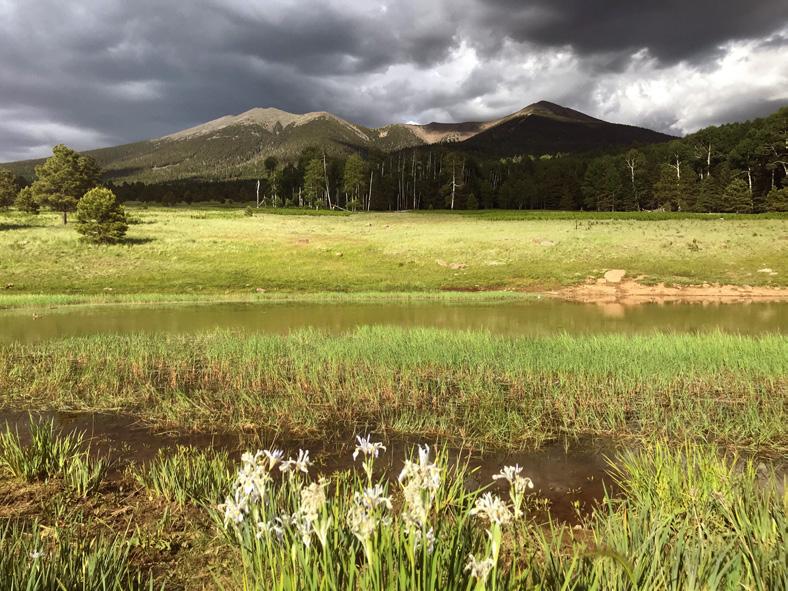
The original acquisition of the land “goes back to a great cotton harvest in the late 1950s or 1960s that gave my grandfather and great uncle capital to invest in ranch land,” she said.
The ranch went into business with the sale of “calves to backgounders who would grow them for sale to feedlots for finishing and harvest,” Morrison said. “We referred to ourselves as cowcalf ranchers, which meant we grazed our herd of cows in the company of a few bulls in the fall, with the intent of having calves birth in the spring. After selling calves in the fall, the process would begin again.”
People who make the sale of cows or beef profitable on grazed land in Arizona have either far more land, which allows many more cows, or “far less expenses because they do the work themselves without hired labor,” she said. “Neither was an option for my family when the ranch came into my grandmother’s ownership and father’s management.”
Because her grandmother was in her 80s and her father’s experience had been in row crops and feed lot and dairy operations, he chose to employ a foreman and cowboys with local
and herd knowledge.
The Forest Service, which sets the number of animal units allowed on permitted grazing land annually, had halved them just before Morrison and her husband arrived to help out.
“At that point the expenses to revenues simply didn’t pencil profitably anymore,” she recalled.
Morrison is an accomplished horsewoman with almost four decades of horse experience. The book details the varied and meaningful relationships she had with some of the ranch’s many horses.
In her memoir, Morrison describes cold-hearted cowboys and funny farri ers and tells how she learned to ranch one-handed after a scary fall from one of her favorite horses that resulted in a broken arm.
It’s a love story with tales of devotion to hard working horses and to the gritty challenges that await along the trail to every panoramic view.
Showing ingenuity in the face of economic hardship, Morrison and her family researched or tried a number of creative uses for their lands, including growing marijuana, making wine and offering horseback rides with cattle “roundups” to the public.
She had hoped that the move to the
Square and enjoy live music, activities and the Freaky Fashion Show! More information from the downtown business alliance is available at https://downtownflagstaff.org/events/ calendar#october-2022.
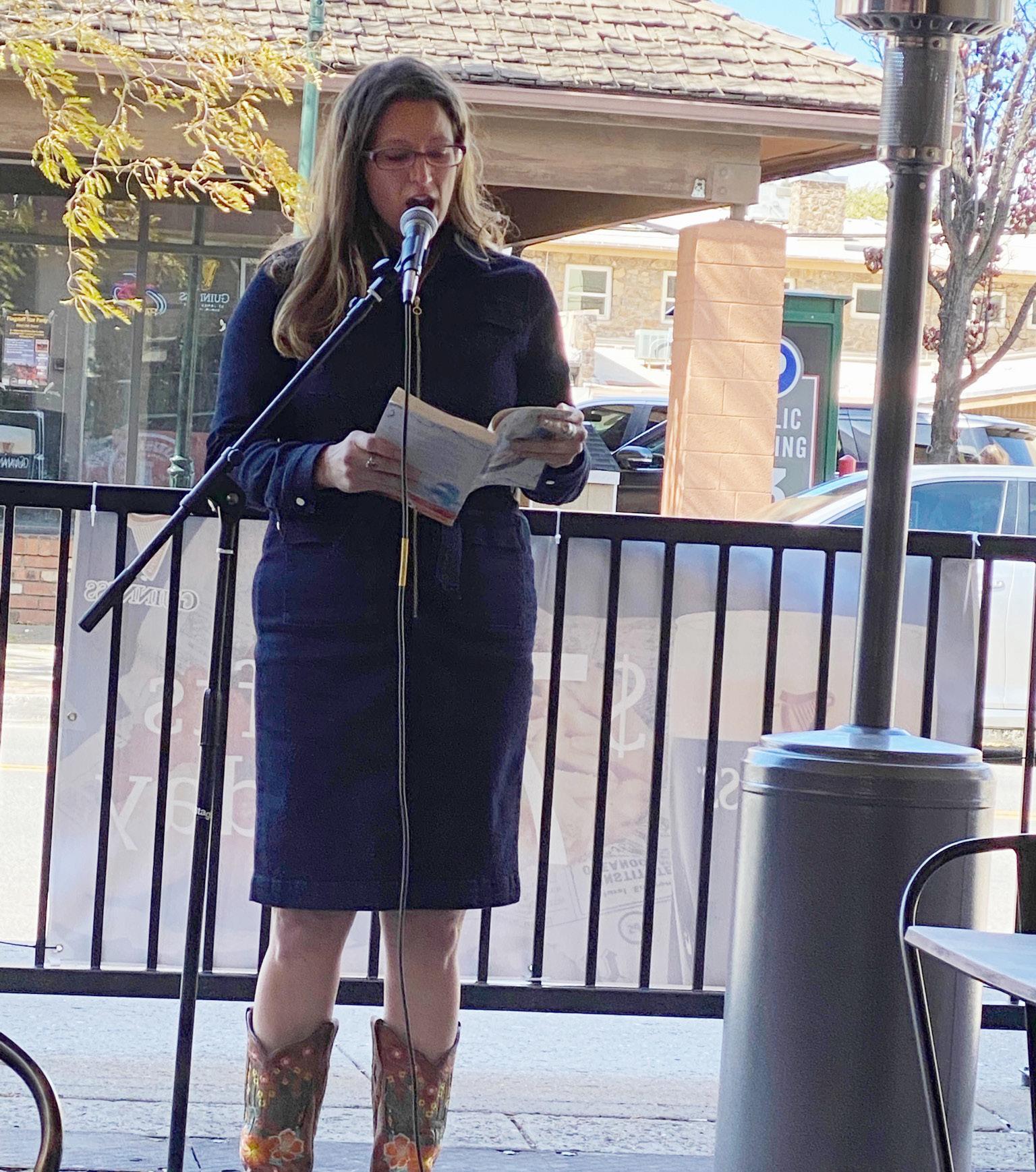
The season continues at the Museum of Northern Arizona Oct. 29-30, with the 19th Annual Celebraciones de la Gente. Enjoy Folklorico dancing, col orful and elaborate ofrendas (altars), insightful heritage programs, and Day of the Dead-inspired crafts for the kids. Celebrate the history and cul ture of Mexican, Mexican American and LatinX communities in Northern Arizona at this annual fall event. Also known as the Day of the Dead, this event is a celebration of life, music, dance, food and heartfelt remem brances. Rooted in community, this weekend-long event is presented in partnership with Flagstaff Nuestras Raíces.
N Festival Day One – Oct. 29 – 10 a.m. to 5 p.m.
N Courtyard After Dark – Oct. 29 – 5 p.m. to 8 p.m.
N Festival Day Two – Oct. 30 – 10 a.m. to 4 p.m. Weekend admission: $20 general admission, $10 MNA members, $5
youth, free for children 9 and under. Tickets are good for the entire week end, including the Courtyard After Dark. Purchase tickets in advance at musnaz.org or direct link https:// musnaz.org/all-upcoming-events/ celebraciones/.
Time for the annual adult tradition with the Rocky Horror Picture Show on Saturday, Oct. 22. The Rocky Horror Picture Show is a 1975 musi cal comedy with a story centered on a young engaged couple whose car breaks down in the rain near a castle where they seek a telephone to call for help. The castle or country home is occupied by strangers in elabo rate costumes celebrating an annual convention. They discover the head of the house is Dr. Frank N. Furter, an apparently mad scientist who actually is an alien transvestite from the planet Transsexual in the galaxy of Transylvania, who creates a living muscle man named Rocky in his laboratory. This is a fun show that you can see over and over again! The Orpheum Theater is located in the heart of downtown with a long his tory dating back over a century. This venue also has some haunted history that you can learn more about on one of Flagstaff’s haunted tours. Visit
orpheumflagstaff.com for tickets.
And, here’s one more quick tip and although not super-scary, it’s super-fun! Plan to go to The Arbore tum at Flagstaff for “Pumpkins by the Peaks” Oct. 28-30.
This season, enjoy a bounty of Halloween happenings and all that Flagstaff has to offer in our beautiful mountain town, from great restau rants, breweries, attractions and shopping to hiking, leaf-peeping and stargazing. Or how about howling at the moon at Lowell Observatory? Looking for more fall fun? Visit discoverflagstaff.com. FBN
ranch might bring her and her husband closer, but instead it strained their troubled marriage. Ultimately, they divorced.
Her first book has been well received.
“Julie Morrison’s persistence and drive teach us how to let go of what doesn’t work and develop what does.
An extraordinary memoir and one we highly recommend!” said Chanticleer Reviews (five stars).
And, “... keenly observant prose, capable of transporting readers directly to the trail,” said Kirkus Reviews.
Her memoir was also the 2018 runner-up in nonfiction in the San Francisco Writers Conference contest and was shortlisted in Chanticleer’s 2019 Journey Nonfiction Awards.
Morrison says she has learned much from the process of writing and pro moting her first book. “It’s still teaching me! It’s my first published book, so everything about the process, from the choice of bindings to media interviews,
is all unfamiliar and humbling. The theme of the book from the time I wrote it was that people, for the most inexplicable and unselfish reasons, will often give us a chance. I am happy to say that continues to be true.”
realize the impact of not being able to get products and the cost of freight that changes hourly. It’s very difficult but she’s kept people working through all of that.”
Blacksmithing and knifemaking classes are popular at Pieh Tool and are held monthly, nine months out of the year. Master Bladesmith Raymond Rybar, one of 150 Master Smiths registered worldwide by the American Blacksmith Society, is an instructor, along with Prescott-based Oso Blanco Ironworks owner Dylan Cook.
“Amy has done a great job creating a resource for blacksmiths in tool distribution and educational oppor tunities,” said Cook, who has taught beginning blacksmithing classes for six years at the Camp Verde location.
Currently, customer accounts have totaled more than 50,000. Annually, they produce a 180-page blacksmith and farrier supply catalog.
“I believe my mom and dad would be very proud that I was able to es tablish Pieh Tool Company and carry on the traditions that they practiced for most of their lives. I could not have done any of this without their inspiration, motivation and incredi ble example.
To contact Pieh Tool Company, visit their website at pieltoolco.com or call 888-7434866.
Way. Holly blows air into a long tube connected to the vase to provide volume. In about half an hour, the red glowing glass cools into a blue and silver showpiece. George places it into another oven where its form will solidify.
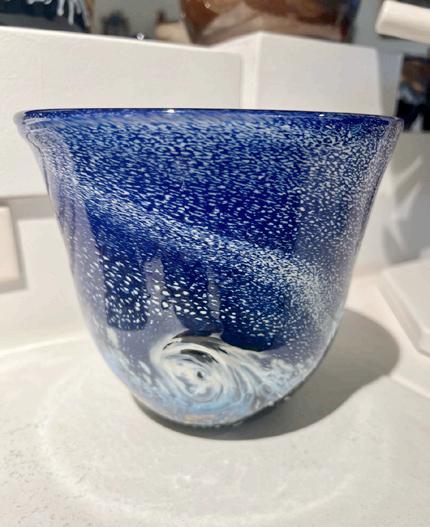
The couple participates each fall in the Coalition’s Celebration of the Night, a sixweek season of activities promoting dark skies appreciation. Celebration of the Night runs from September through mid-Octo ber and offers the three-night Flagstaff Star Party – with an interactive Field Day this year – a Night Sky Photography workshop, a destination event at Arizona Nordic Vil lage with legendary Egyptologist Zahi Hawass as the event’s guest speaker this year for its debut, gallery exhibits and the Dark Skies Lecture Series at Lowell Observatory featuring National Geographic Explorer and cultural astronomer Bryan Bates, Coconino Astronomical Society astronomer Padraig Houlahan and USGS Astrogeology Science Center physical scientist Ryan Anderson this month.
The Averbecks and their retail gallery, Arizona Handmade, participate by creating a dark skies exhibit in their downtown shop, featuring local master artisans and their artistic expressions of the night. Also participating is the Artists’ Gallery on North San Francisco Street, across from Arizona Handmade and the Phoenix Avenue Gallery, owned by artist Frederica Hall, located on the corner of Beaver St. and Phoenix Ave.
For those interested in trying their skill at glass blowing, Averbeck is offering workshops this month, in which participants can create their own handblown glass ball ornament. The cost is $37 per person and includes the session and the glass ball that will be ready for pick up the next day. Workshops are scheduled for Oct. 29 and 30 and Nov. 5 and 12. For more information, visit azhandmade.com. To make your workshop reservation, stop by the gallery at 20 N. San Francisco St., or call 928-779-3790. FBN

Signature Taxidermy employs some of the world’s best artisans to ensure nothing short of the best for each of our customers, and their specific, one of a kind pieces.
USDA approved facility for receiving sport hunted trophies from around the world. This also includes all deer, and turkey from Mexico.
Trophy Room Design- We can assist you in designing a trophy room display to complement your collection. We can assist with lighting, layout, murals, and dioramas. Custom pedestal and base work available.
Crating and Shipping- We crate and ship around the world, and have discounts with many major trucking companies.
Rush Orders- Rush orders are available on request for an additional fee.
Stock Taxidermy- We have an assortment of legal capes, antlers, and horns that can be mounted in a pose of your choice.


thing with chemicals. Same thing with electricity. We are reducing emis sions and pollution dramatically. We take great pride in having absolute purified air and sterile water.”
Increased production will permit Pure Wafer to add to its already large customer base of 1,600 integrated device manufacturers (IDM) and original equipment manufacturers (OEMs).
The company has a growing client base throughout North America, Asia and Europe.
Arizona State University (ASU) President Michel Crow is also an advocate for expanding the semiconductor business in the state. He said that ASU is well positioned to provide the skilled talent needed, with 30,000 students currently enrolled in the engineering school.
Sidhwa admits that finding good labor is sometimes difficult. Because Pure Wafer operates 24 hours a day, seven days a week, and because it is expanding so rapidly, recruiting reliable labor is a continual challenge. Additionally, because Pure Wafer has its original plant in Prescott and another two fabrication plants in San Jose and Campbell, California, called Noel Technologies, labor demands continue to increase, Sidhwa said. Last month’s report from the U.S. Bureau of Labor Statistics report ed the creation of 528,000 new jobs.
Pure Wafer is offering short- and long-term insurance plans, disability plans, medical insurance, on-the-job training and professional advance ment opportunities to attract skilled workers.
“Financial incentives now available are going to accelerate even further since Pure Wafer is the No. 1 most advanced wafer reclaim company in the nation,” said Sidhwa. “We’re proud of that.”
Founder:
Kevin
Business News
Commerce
a publication
Business News, LLC and is distributed free each month to residents of Flagstaff, Sedona, Williams and Winslow.
of any portion of the publication
strictly prohibited without expressed permission.
publisher reserves the right to refuse any advertisements
to the newspaper and is not responsible for the claims of its advertisers.
Recidivism measures the rate at which offenders commit other crimes, either by arrest or conviction baselines, after being released from incarceration. According to the National Institute of Corrections, the national average for inmates returning to jail is 70% in plac es without in-custody substance-abuse programs.




Flagstaff Business News met with Mike Vaughan and Ben Tillman, both substance abuse counselors in EXO DUS, to look at the high success rate of this Jail Tax-funded program.
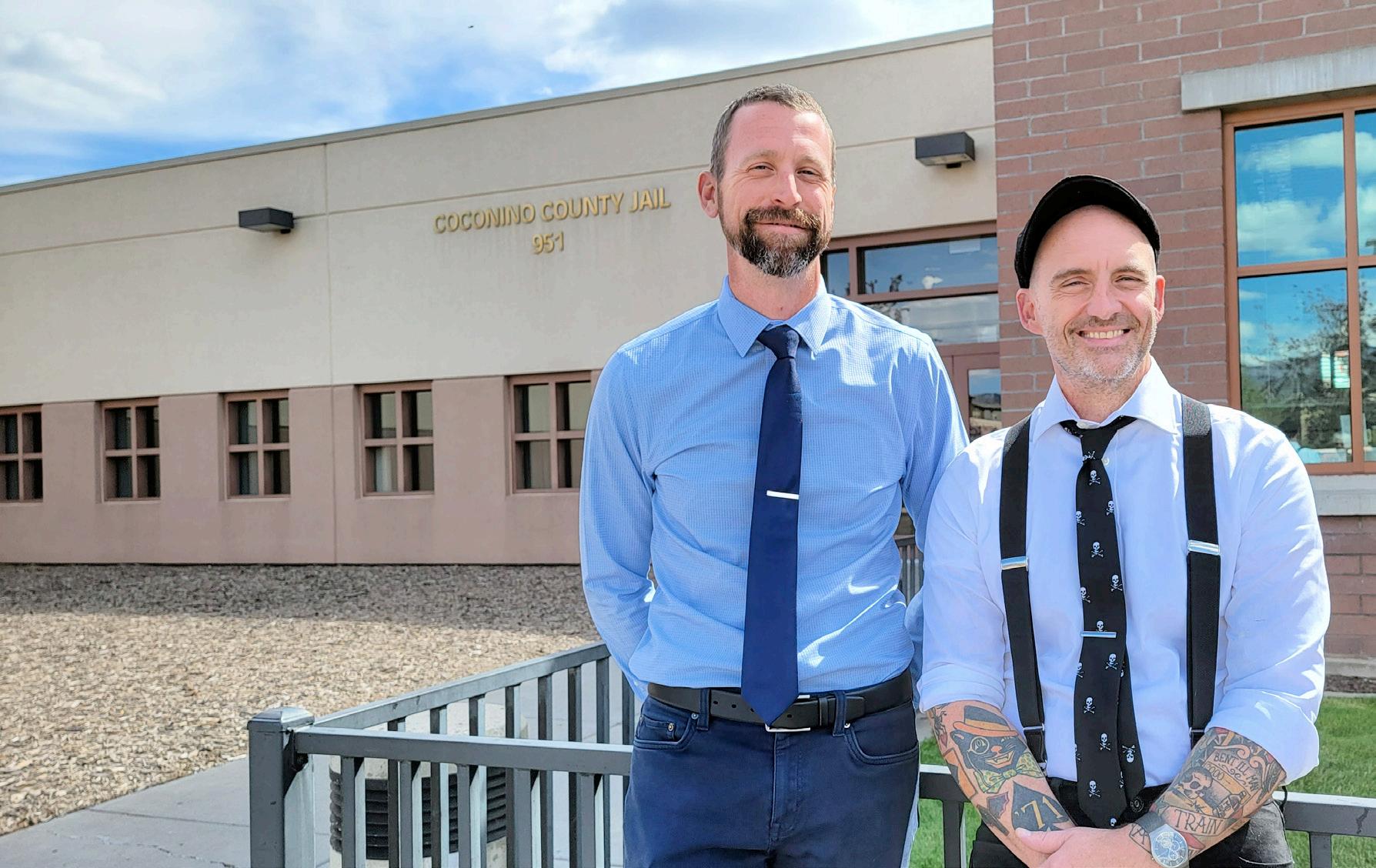
“We track recidivism by if they come back to this jail within three years. Recidivism is 30% here. However, it is difficult to measure because they could leave the state,” said Vaughan.
“One reason we do so well is that we can get people to buy into the lifestyle of recovery,” said Tillman of the EXODUS program. “The bright light of EXODUS is that we have really good numbers.”
According to the Coconino County website, EXODUS uses 12-step and bio-psychosocial materials to augment the program. “That means we’re a com prehensive program and treat all three layers: biological, psychological and social,” explained Vaughan. “We do that through education and presenting topics like anger management, relapse prevention and SMART recovery.”
SMART stands for Self-Management and Recovery Training.


Jail inmates volunteer to do 90 days in EXODUS housing units called recovery pods. “There are three specific housing units for individuals who want treatment,” said Vaughan. “The volun teer, women’s and probation pods.”
Vaughan attributed another crucial part of EXODUS’s success to the Flagstaff community that accepts and embraces the EXODUS participants.
He pointed to local entities that support participants’ transitions from jail back to their communities, including:
N A robust 12-step recovery commu nity;
N Prosecutors and public defenders who believe in restorative versus punitive justice;
N Three specialty courts, one being the Recovery Court; and

















N Multiple resources for housing and employment such as Goodwill, Catholic Charities and Hope Lives.
“Sheriff Driscoll is very much down with preventing recidivism,” added Tillman. “Our sheriff is really big on restorative justice rather than punitive justice.”
The community is where the success is, he said. “It takes a village.” But the substance abuse counselor noted that restorative justice takes time and needs support from multiple entities in the community.
“There is this whole comprehensive community and webbing that supports and is willing to help us in the pods,”
said Vaughan.
Another jail project, Pathways to Community, is a new program that connects participants of the EXODUS program and others exiting jail to a resource center filled with social, behavioral, housing, transportation and legal services. This program is a collaborative partnership between the Coconino County Sheriff’s Office and
Coconino County Health and Human Services (CCHHS).
“From the jail exit door, they have only 15 feet to walk down the hall to the resources, which is very different from bus rides across town to various resources they need. Instead, they can directly access the help they need, an important thing for those with substance abuse issues,” said Vaughan.
“The jail tax supports these programs and keeps us working to do the work that we need to do. There are many alumni of the EXODUS program out there right now doing good work in our community.”
Watch your mailbox for the official Coconino County Publicity Pamphlet and Text Ballot. It will arrive by mail in early October. FBN
